Astronomy through the Ages - the Twentieth Century
Back to the Index of I2AO (Introduction to Astronomy Online)
ASTRONOMY THROUGH THE AGES: The Twentieth Century by Lesa Moore and Ian Kemp
- 1901 – Annie Jump Cannon
- 1905, 1914 – Albert Einstein
- c. 1910 – Hertrzsprung and Russell
- 1912 – Henrietta Swan Leavitt
- 1919, 1920 – Arthur Stanley Eddington
- 1925 – Cecilia Payne-Gaposchkin
- 1927 – Georges Lemaître
- 1929 – Edwin Hubble
- From 1939 – Ruby Payne-Scott
- From 1947 – E. Margaret Burbidge
- From 1950s – Vera Rubin
- From 1960s – Eugene and Carolyn Shoemaker
- From 1966 – Beatrice Tinsley
- From 1966 – Stephen Hawking
- 1967 – Jocelyn Bell Burnell
- 1968 – Ray Davis
- From 1970 – Eleanor ‘Glo’ Helin
- From 1981 – Rev. Robert Evans
- From 1983 – Carolyn Porco
- 1984 – Kip Thorne
- From 1986 – Margaret Geller
- 1992 – Alex Wolszczan and Dale Frail
- 1999 – Brian Schmidt
-----------------------
21: 1901 – Annie Jump Cannon
Author: Lesa Moore
Annie Jump Cannon was an American astronomer whose cataloguing work was instrumental in the development of our modern stellar classification. With Edward Pickering, she is credited with the creation of the Harvard Classification Scheme, which was the first serious attempt to organize and classify stars based on their temperatures. In 1896, Cannon became a member of Pickering’s Women (a group of computers tasked to analyse observational astronomical data). Pickering made a long-term project of obtaining the optical spectra of as many stars as possible in the Henry Draper Catalogue, and to index and classify stars by their spectra.
Williamina Fleming, another of “Pickering’s Women”, classified 10,000 spectra in an alphabetical sequence of 15 letters. Cannon realised that the classification system could be better organised in terms of stellar temperatures.
So, in 1901, Cannon rearranged the classification scheme to avoid having to update the star catalogues. This is why the letters are now all jumbled up.
The mnemonic of “Oh Be a Fine Girl, Kiss Me” has developed as a way to remember the stellar classifications, OBAFGKM. My preferred version is “OH BIG AND FAT GORILLA, KILL MOTHER”.
The female astronomers doing this ground-breaking work earned 25 cents per hour, which was less than what the secretaries at the university earned.
Cannon’s Draper Catalogue listed nearly 230,000 stars, all the work of a single observer. Cannon also published other catalogues of variable stars, including 300 that she personally discovered. Her career lasted more than 40 years, during which time women gained wider acceptance within the scientific community.
Figure 21.1 below - Annie Jump Cannon: Cannon is seen sitting at her desk at Harvard College Observatory, with one of the glass plates. All this work was done visually by examining spectra on the plates with a magnifying glass.
Image Credit: Wikimedia Commons
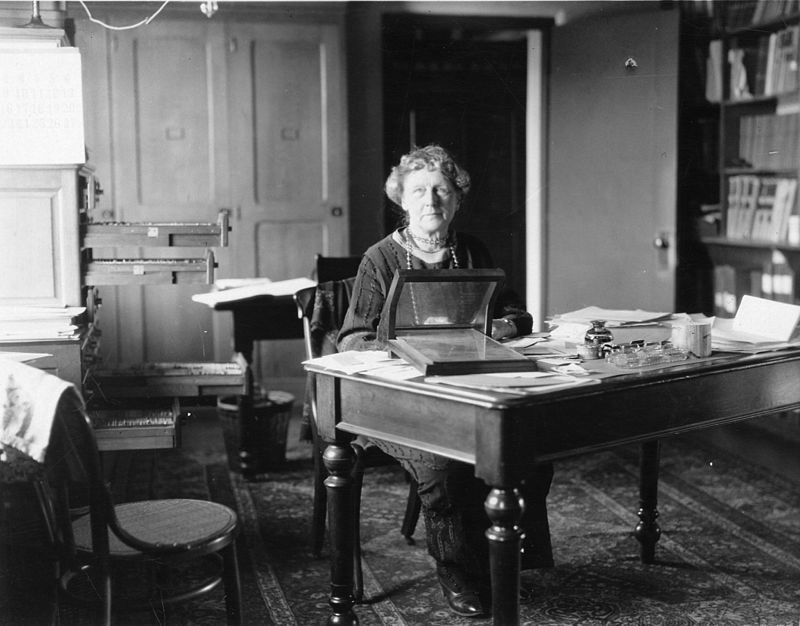
Figure 21.2 below - Spectral Classifications: Classifications of OBAFGKM are based on temperature, hottest at the top.
Image Credit: PBworks/azastro Module 3

22: 1905 – Albert Einstein
Author: Ian Kemp
If I had been working as a physicist in 1904, I would probably be thinking about a different career. After all, almost everything was known and written up in textbooks under the four classic divisions of Physics. There were just a few oddities that didn’t fit the equations, but they were of minor concern and were probably just small mistakes that would soon be corrected.
Until a bloke called Albert Einstein turned the entire field upside-down in the course of just nine years. Einstein had an unpromising early career and certainly didn’t look like a proper scientist - he was castigated as a dreamer and time waster who “will never amount to anything”, and ended up in a rather dull clerical job in the Swiss Patent office. But his dreaming payed off, big time. Thinking carefully about the physical meaning of Maxwell’s equations, Einstein wondered what a light wave would look like if you travelled alongside it at the speed of light. And realised you couldn’t, because Maxwell’s model - of a varying vector in the electric field creating a varying vector in the magnetic field - could not appear stationary. In fact, it had to propagate at the speed of light. With the conviction of the true genius, Einstein declared that the speed of light must be the same for all observers, whatever speed they are travelling. This postulate led to a series of apparently nonsensical conclusions as Einstein formulated the ‘special theory of relativity’, but he knew that his premise and reasoning were correct and that the rest of physics, including absolute time, absolute distance, and even absolute mass, were incorrect. His one simple thought experiment led to the concepts of time dilation and energy-mass equivalence, and the most famous equation in the world (yes, that one), first published in 1905.
Never one to have a one-track mind, Einstein also thought about results from an odd experiment in which light energy could eject electrons from a metal, but only above a certain frequency. The 1905, his theory of the Photo-Electric Effect, for which he won the 1921 Nobel Prize, was a major step in the development of quantum mechanics, which is probably today’s most successful physical theory. But Einstein never believed in the formulation of the theory that we use today, the Copenhagen interpretation. (For what it’s worth, neither do I.)
Within a few years, that amazing brain was back at work. If you were sealed in a box with no windows, and felt a force pulling you to the floor, how could you tell if it were gravity or upward acceleration? Postulating that you couldn’t, Einstein established the ‘equivalence principle’, that gravitational and inertial mass are the same thing, and went on to overturn the gravitational theory of Newton, which had been one of the rocks of modern science for over 200 years. Mass bends spacetime, and therefore light travels through spacetime in non-linear paths. In modern parlance, spacetime is the ‘field’ used by gravitational interactions. General relativity produced some bizarre predictions, but some of its simpler ones were verified within a few years (the orbit of Mercury does not quite fit Newton’s equations; light can be seen to be redshifted in Earth’s gravitational field), and more recently some of the more apocalyptic predications have been demonstrated (the strange bending of light by a black hole; gravitational lensing, in which an image of a distant galaxy is distorted into an arc; gravitational waves emitted by rapidly oscillating masses).
By the way, as we’ve seen, Michell predicted black holes over 100 years earlier, using Newtonian mechanics. But calculations of the bending of light differed using Einstein’s new model. A famous experiment by Arthur Eddington in 1919 showed that Einstein’s model produced the right answers, and Michell’s (and Newton's!) did not. There are many books about Einstein’s life and his later work, but these are the biggies. Einstein died in the USA in 1955, 76 years after his birth in Germany, 1879.
Figure 22.1 below - Einstein: Albert Einstein in Washington DC
Image Credit: Photo by Ian Kemp

Figure 22.2 below - Experiment: Part of the experimental rig used to measure gravitational redshift at Harvard University in 1959.
Image Credit: Corbis

Figure 22.3 below - Waves: Gravitational waves are generated with the gradient in spacetime pointing to the moving location of an oscillating mass.
Image Credit: Uncredited
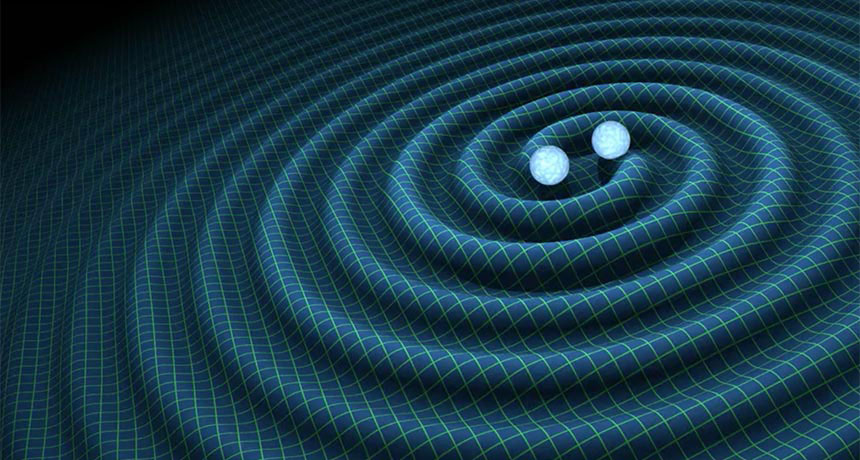
23: c. 1910 – Hertrzsprung and Russell
Author: Lesa Moore
If you are trying to understand something about a population, say, at the supermarket, you could count all the people in certain age groups. There will be a few infants, some children and some oldies. The majority of the population will be in their child-bearing years of adulthood, where they look more-or-less the same for the longest period of their lives.
If you want to analyse stars, you don’t directly know their ages. So, you have to be a bit clever and look at their measurable properties – magnitude and spectral classification (the latter is related to colour).
Back around 1910, Ejnar Hertzsprung began making colour-magnitude diagrams for clusters of stars, where apparent magnitude could be used, with all stars being at more-or-less the same distance. His first diagram was published in 1911. Around the same time, Henry Norris Russell was plotting stars according to their absolute magnitudes, using distances from annual stellar parallax and the moving cluster method, to put stars at different distances on the same diagram (absolute magnitude can be determined from apparent magnitude and distance). This became easier after 1912 (refer next section), when the period-luminosity relationship was established for Cepheid variable stars, allowing for accurate distance measurements of many more stars. Russell published his version of the colour-magnitude diagram in 1913.
A similar way to do it is to plot luminosity against surface temperature and modern teaching diagrams frequently show both, using four axes, as in the example below. The diagram yields useful information about what starts do for most of their lives: the main sequence stars are fusing hydrogen into helium in their cores; the babies are just to the right of the main sequence; some of the oldies are at the top right (the red giants) and the real oldies are the white dwarfs at bottom left. As stars evolve, brighten, fade, swell up or contract, they end up on different parts of the diagram.
Figure 23.1 below - Schwarzschild and Hertzsprung: Karl Schwarzschild (left) and Ejnar Hertzsprung in professorial gowns in front of the Göttingen Observatory building sometime in 1909.
Image Credit: The Göttingen Observatory photo, courtesy Hartmut Grosser. Public Domain.

Figure 23.2 below - Russell: Portrait of Henry Norris Russell.
Image Credit: Unknown author. Public Domain.

Figure 23.3 below - The H-R Diagram: “This diagram below is a plot of 22000 stars from the Hipparcos Catalogue together with 1000 low-luminosity stars (red and white dwarfs) from the Gliese Catalogue of Nearby Stars. The ordinary hydrogen-burning dwarf stars like the Sun are found in a band running from top-left to bottom-right called the Main Sequence. Giant stars form their own clump on the upper-right side of the diagram. Above them lie the much rarer bright giants and supergiants. At the lower-left is the band of white dwarfs – these are the dead cores of old stars which have no internal energy source and over billions of years slowly cool down towards the bottom-right of the diagram.”
Image Credit: Richard Powell, Creative Commons Attribution-Share Alike 2.5 Generic license.
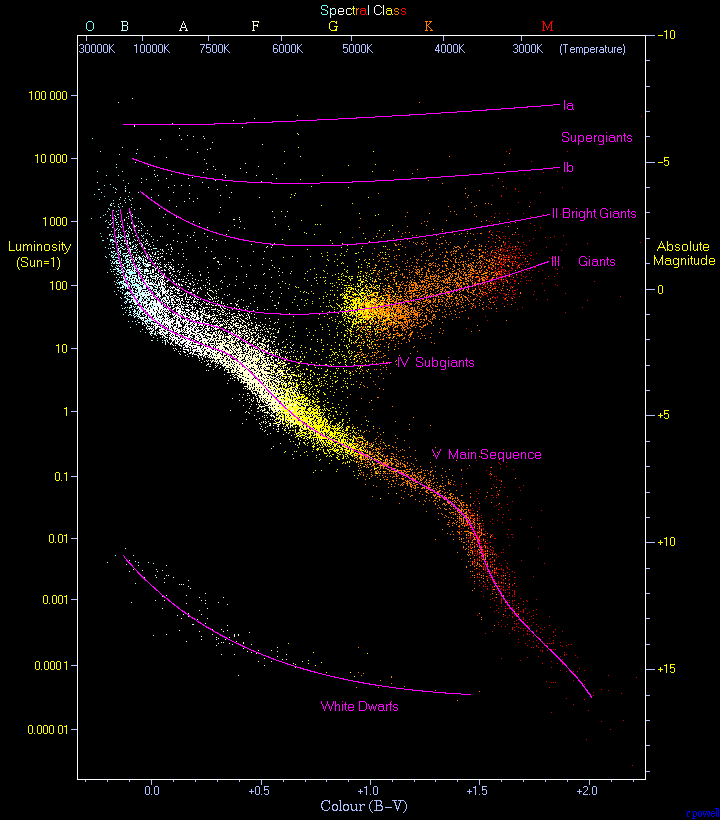
24: 1912 – Henrietta Swan Leavitt
Author: Ian Kemp
In the countries which dominated progress in astronomy, it was a men’s world. Structural discrimination made it hard for a woman to get the advanced education necessary to participate in science, let alone get into a position of significant influence, and so much talent was wasted.
By 1900, though, things began to change - especially in the USA where the women’s colleges and the willingness of new universities began to provide skills and opportunities to women. One talent who was not wasted was Henrietta Swan Leavitt - born in Massachusetts in 1868, her parents and she herself were very religious (her father was a church minister), and she attended a strongly religious school, Oberlin college which, since 1835, had been relatively progressive in being co-educational and multiracial.
In 1898 she was put in charge of the collection of products of the new-fangled technology of ‘photography’ at the Harvard College Observatory. Henrietta progressed from Curator of Photographs to a full-time research position in 1902, then to head of photometry in 1907. At Harvard College, the big project was an all-sky photometry survey, to measure the brightness of all known stars. Leavitt ended up specialising in the characterisation of variable stars and, in addition to the thousands of standard magnitudes measured, she catalogued over 2,400 variable stars - half of the total known by 1930.
Her real biggie in terms of impact was the establishment of a relationship, published in 1912, between the variation period and intrinsic brightness in a certain class of variable stars, now known as the Cepheids. This monumental discovery allowed Cepheid variables to be used as part of the cosmic distance ladder - if you see a distant galaxy and can find Cepheids, you can measure their period and apparent brightness and then use Leavitt’s law to establish the true distance, well beyond what could be measured using the old technique of annual stellar parallax.
Her career was cut short at age 53 by stomach cancer - she died profoundly deaf and left no children, but she did manage to get a lunar crater named after her, albeit on the far side of the Moon. Apart from that, her only monument seems to be her tombstone: no marble or granite statues for Henrietta. It is to the credit of Magnus Gösta Mittag-Leffler that he nominated her for the 1926 Nobel Prize in physics, but his application was cancelled when it was realised that she was no longer alive.
Figure 24.1 below - Henrietta Swan Leavitt
Image Credit: Wikipedia/Public Domain

Figure 24.2 below - Leavitt’s Law: The relationship was established by studying a number of Cepheid variables all known to be at the same distance. This chart shows data for stars in the Small Magellanic Cloud (SMC). Minimum (lower data) and maximum (upper data) magnitudes for Cepheid variables in the SMC are plotted against log of fluctuation period. Note that on the magnitude scale (vertical axis), smaller numbers mean brighter magnitudes.
Image Credit: “Periods of 25 Variable Stars in the Small Magellanic Cloud” Harvard College Observatory Circular, vol. 173, Leavitt et al. 1912, HarCi, 173.
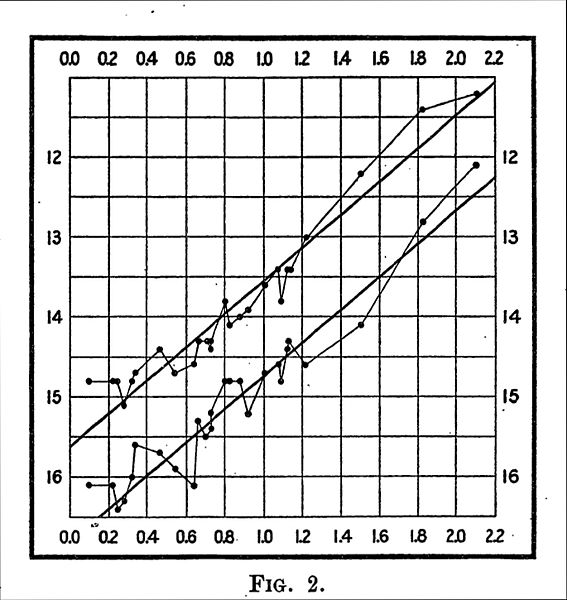
25: 1919, 1920 – Arthur Stanley Eddington
Author: Lesa Moore
If the Sun were made of burning coal, it would only last five thousand years. Yet, there was evidence on Earth of fossils and rock strata that were much older than this. How could the Earth be older than the Sun? Or, was the Sun really much older? It was in 1920, that Eddington proposed nuclear fusion (from hydrogen to helium) as the source of the Sun’s energy, in his paper “The Internal Constitution of the Stars”. At last, a stellar lifetime of millions, or even billions of years could be explained.
Eddington understood that stars behaved as ideal gases and he was able to compute density, temperature and pressure models for stellar interiors, determining that core temperatures must be millions of degrees. He was also able to relate the conversion of matter into energy in stars to Einstein’s famous equation, E=mc^2. All this, despite that fact that the proportion of hydrogen in stars was assumed, at the time, to be quite small (perhaps only 5%).
Eddington is also famous for his essential role in the solar eclipse expedition to Príncipe in May 1919, from which measurements of the photographs showed the curvature of light around the Sun. These results were evidence to corroborate Einstein’s General Theory of Relativity. Eddington’s important work in astronomy meant that he was exempted from conscription to military service in WWII in the preceding years. Just as well!
Figure 25.1 below - Photo of Eddington
Image Credit: George Grantham Bain Collection, Library of Congress Prints and Photographs Division Washington, D.C. Public Domain.
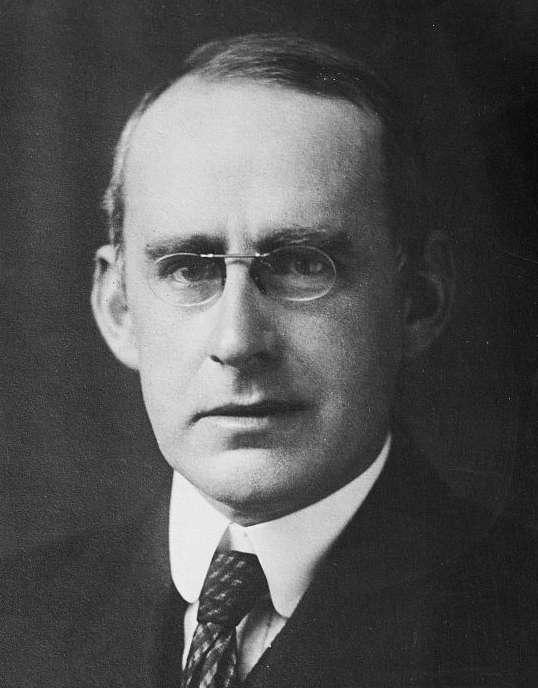
Figure 25.2 below - Eddington Plaque: Plaque at 42 Walliscote Road, Weston-super-Mare, 2018.
Image Credit: Peter Barrington, Creative Commons Attribution-Share Alike 4.0 International license.

Figure 25.3 below - 1919 Eclipse Photo: Positions of stars of interest are indicated with a horizontal line either side of each star. The measured positions vary from the charted positions, relative to other stars, by an amount in agreement with General Relativity.
Image Credit: F. W. Dyson, A. S. Eddington, and C. Davidson, "A Determination of the Deflection of Light by the Sun's Gravitational Field, from Observations Made at the Total Eclipse of May 29, 1919" Philosophical Transactions of the Royal Society of London. Series A, Containing Papers of a Mathematical or Physical Character (1920): 291-333, on 332. Public Domain.
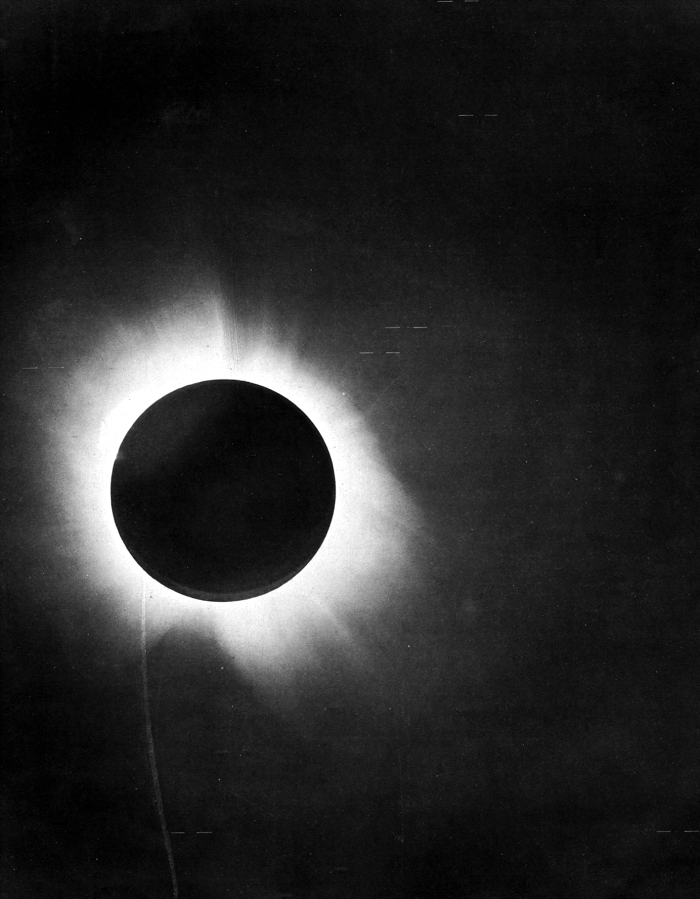
26: 1925 – Cecilia Payne-Gaposchkin
Author: Lesa Moore
After changing schools in England in order to study science, being inspired by a 1919 lecture by Arthur Eddington about the famous expedition to measure star positions during a total solar eclipse as a test of Einstein’s General Relativity, yet being denied a degree at Cambridge because they didn’t at that time award degrees to women, Payne moved to the United States to become the second student to take up a fellowship to encourage women to study astronomy at Harvard College Observatory.
Previously, a 1914 paper published in “Science” by Henry Norris Russell (of H-R-diagram fame) compared the composition of the Sun with the crust of the Earth, concluding that their compositions were similar. The erroneous presumption was that the abundance of elements in the Sun was proportional to the intensity of the Sun’s spectral absorption lines.
Payne was interested in ionization theory (developed by Indian physicist, Meghnad Saha). She was able to accurately relate the spectral classes of stars to their actual temperatures by applying the theory. Her PhD thesis then applied the theory to the solar spectrum, enabling her to conclude that the Sun was made predominantly of hydrogen.
Sadly, her work was criticised by Russell, leading to Payne doubting her own results. Subsequently, astronomer Otto Struve described her work as “the most brilliant PhD thesis ever written in astronomy”. By 1929, Russell had derived the same results by different means. When he published, he acknowledged Payne’s earlier work and discovery. Nevertheless, he is often credited for the conclusions she reached.
Payne became an American citizen in 1931 and married in 1934. The Payne-Gaposchkins had three children. This didn’t seem to slow her down at all - she continued at Harvard, studying high-luminosity stars and variable stars, but did not receive the title of “astronomer” until 1938 (the same year as the publication of her second book). In 1956, she became the first woman to be promoted to full professor at Harvard’s Faculty of Arts and Sciences and, eventually, she also became the first woman to head a department at Harvard.
In her autobiography, Payne tells that, while in school, she created an experiment on the efficacy of prayer by dividing her exams in two groups, praying for success only on one, the other one being a control group. She achieved the higher marks in the latter group and became agnostic!
Figure 26.1 below - Cecilia Payne-Gaposchkin
Image Credit: Acc. 90-105 - Science Service, Records, 1920s-1970s, Smithsonian Institution Archives.

Figure 26.2 below - The Saha Equation: The Saha equation for photoionization from my astrophysics summaries (3rd-year university). The equation explains why the absorption lines of calcium dominate the solar spectrum, even though there is 440,000 times as much hydrogen as calcium in the Sun. If you’re desperate to get your teeth into this, take a look at this.
Image Credit: Lesa Moore's study notes
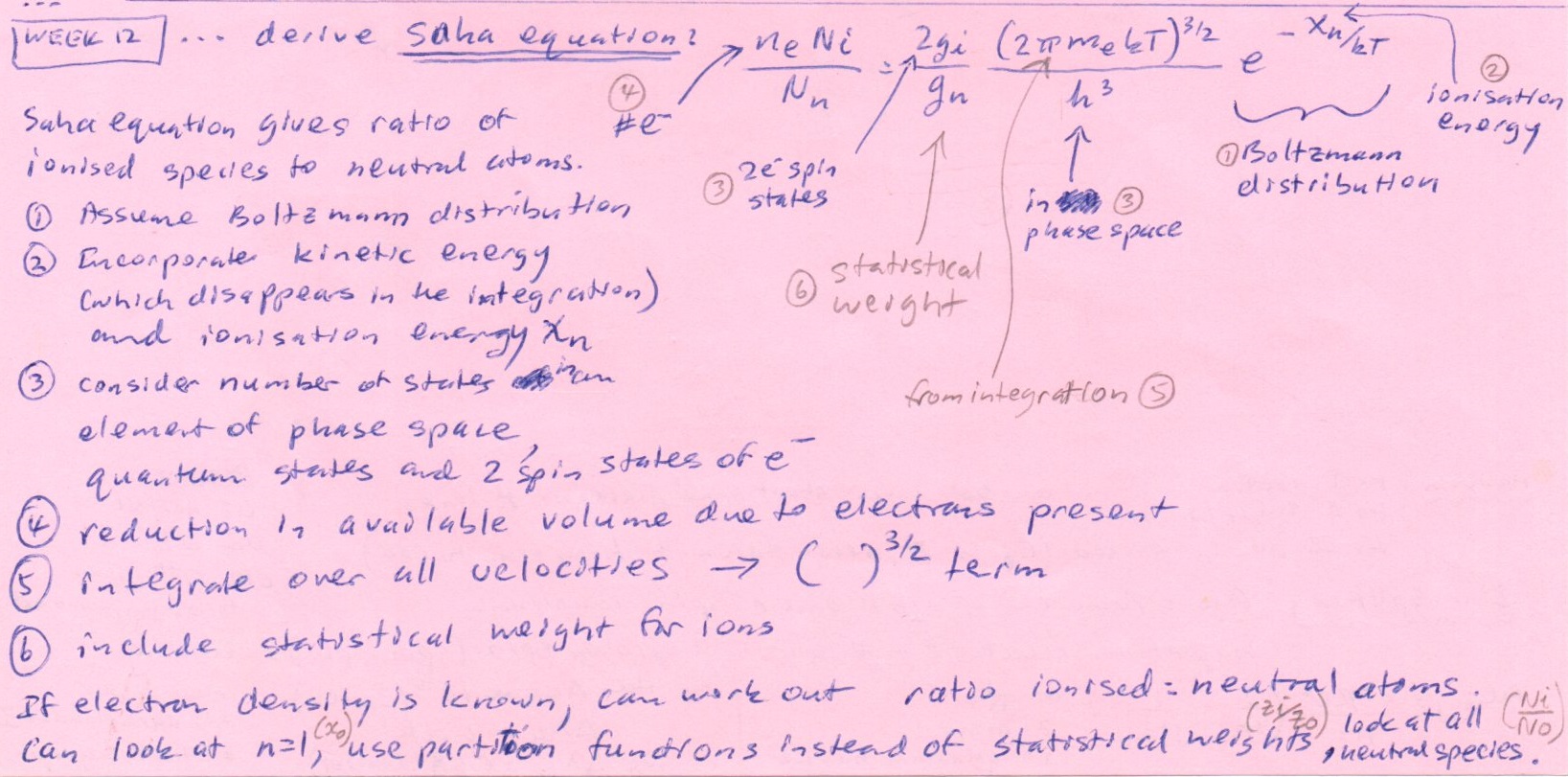
27: 1927 – Georges Lemaître
Author: Ian Kemp
The Big Bang Theory (Part 1)
Georges Lemaître was born in Belgium in 1894. After WWI, he studied to become a priest but ended up in science, initially at Cambridge University in the UK, then later in MIT in Cambridge, USA. While at MIT, he became familiar with the work of Hubble and Shapley, who had found a relationship between the distance of galaxies (from Earth) and their redshift (more on this tomorrow). In 1927, he took up a position as Professor of Astrophysics at the Catholic University of Leuven, and published a solution of Einstein’s equations of general relativity (GR), encompassing an expanding universe.
Actually, Einstein himself had noticed this possible solution, but rejected it by introducing a ‘cosmological constant’ to make the equations give a static solution. Others had proposed an expanding universe, but Lemaître put together a simple single theoretical solution based on GR. He also reasoned that if the universe is expanding, it must have started as a single point in space & time, a concept which was later ridiculed by his critics as a ‘big bang’.
A critical part of the story is that, perhaps due to his appointment back in Belgium, he published his results and the big bang theory in the French language, in a Belgian journal, “Annales de la Société Scientifique de Bruxelles”. Very patriotic and supportive to his new colleagues, but a major career mistake because it meant that his result was ignored by the largely English-speaking cosmology community. His work was a major step forward in the history of cosmology, as there had been an argument going on for centuries about the age of the universe. Aristotle assumed the universe to be infinitely old (in conflict with the Greek creation myths). But many medieval astronomers had a problem with this, as it conflicted with their own Abrahamic creation myths. Later, a scientific front opened as it was debated how a static or a dynamic universe could be compatible with known physical laws. Lemaître provided the answer. Einstein himself finally caved and accepted the concept of the expanding universe in 1931.
Lemaître continued to work on cosmology as well as other areas, including cosmic rays, and the mathematically intriguing ‘three body problem’ (which he, like everyone else, failed to solve), and died at the age of 71 in 1966.
Figure 27.1 below - Einstein and Lemaître having a chat in 1933
Image Credit: Université Catholique, Louvain
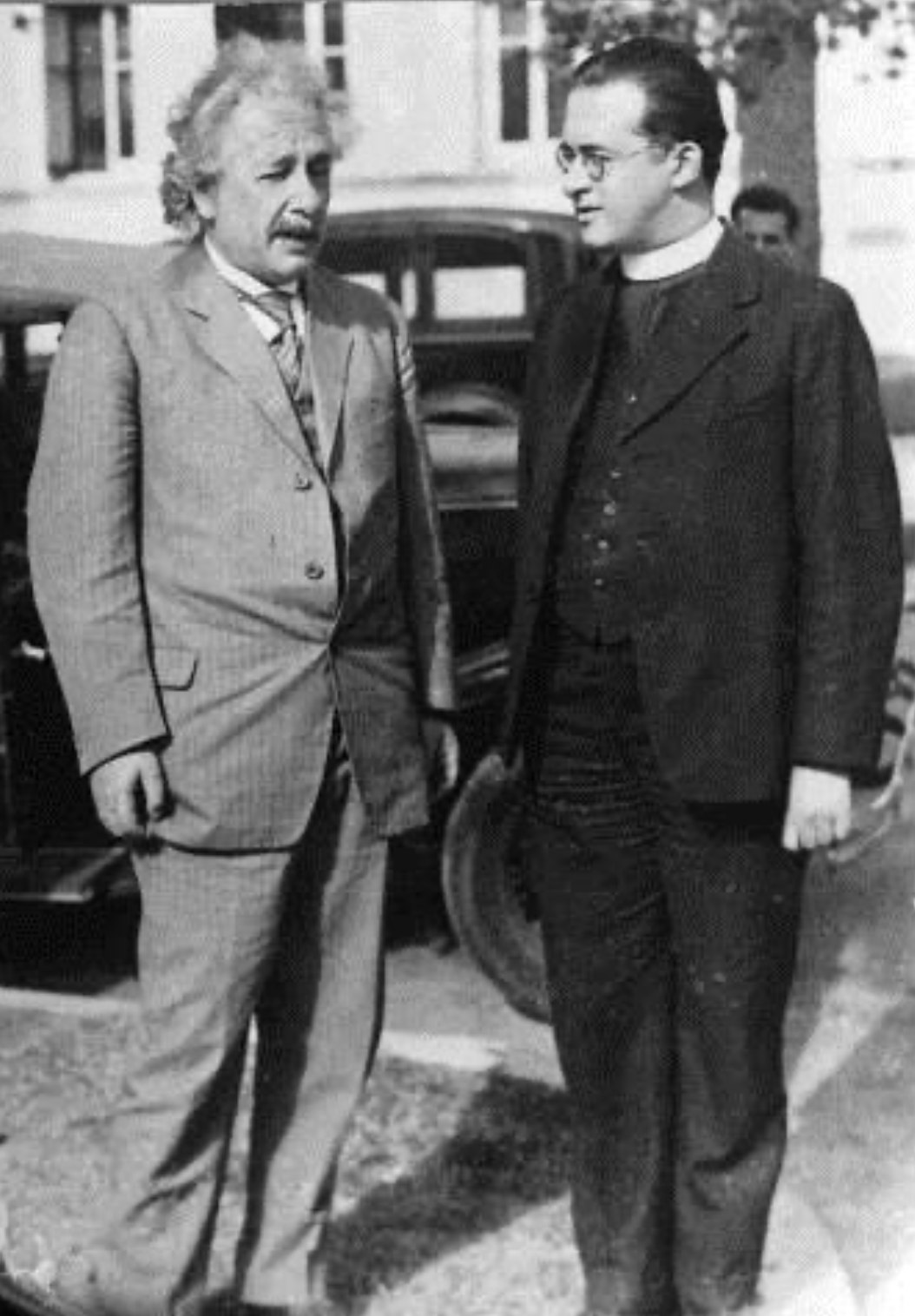
Figure 27.2 below - Lemaître's Paper: Lemaître’s critically mis-published paper. Translation: “A homogeneous universe of constant mass and increasing radius accounting for the radial velocity of extra-galactic nebulae”.
Image Credit: NASA ADS
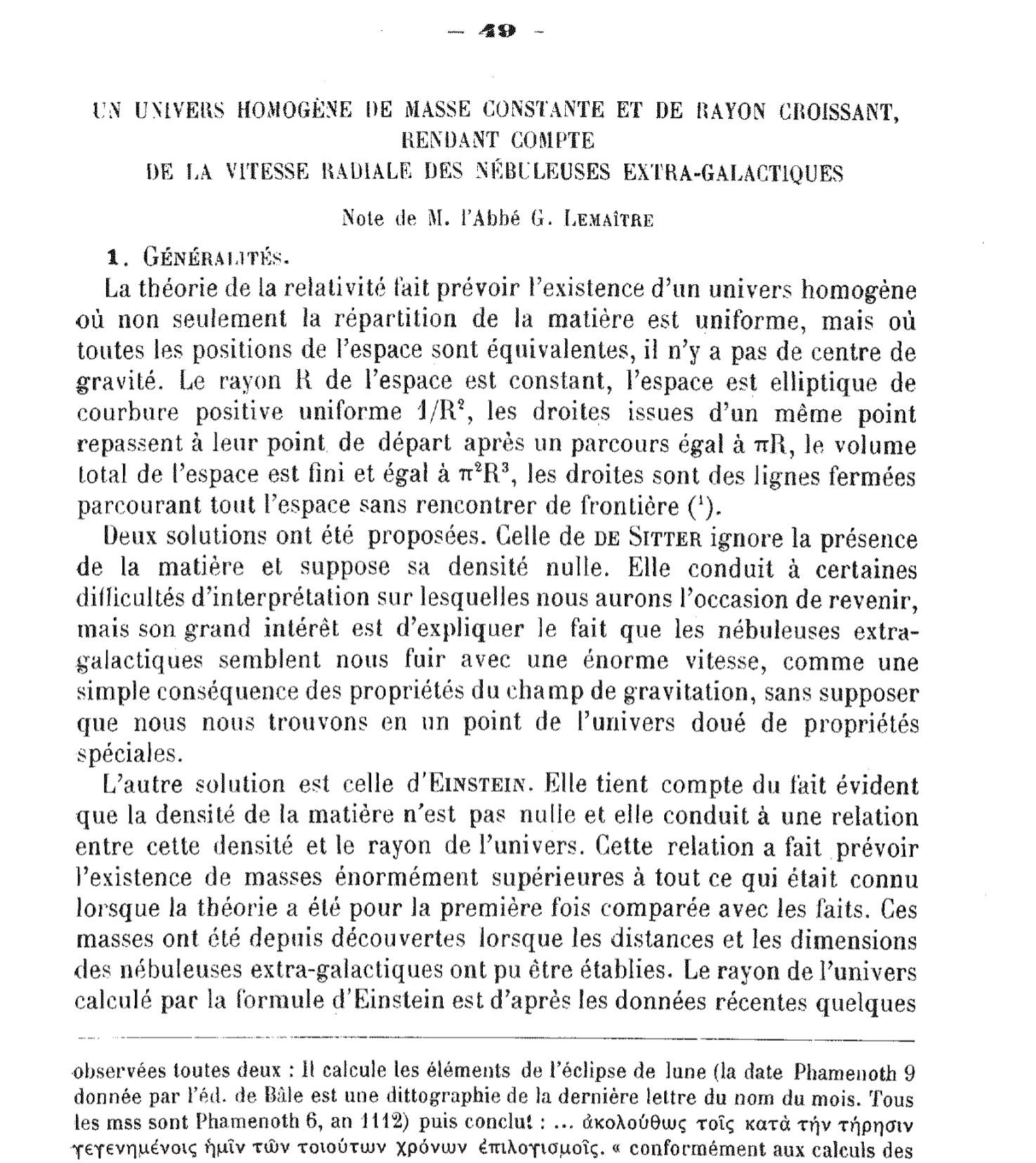
28: 1929 – Edwin Hubble
Author: Ian Kemp
Hubble Trouble - The Big Bang Theory (Part 2)
Edwin Hubble (1889-1953) was a high flier from the start. Whilst on a scholarship at Chicago University, he worked for a while for future Nobel Prize-winner Robert Millikan (the electron guy); he won a Rhodes Scholarship to Oxford University, and later did postdoc work at Yerkes Observatory in the USA, before being recruited to the Mt Wilson observatory with its 100-inch telescope, the largest in the world. After a break to join the military in WWII, he did research on the so-called ‘spiral nebulae’. At the time, it was thought that the Milky Way was the be-all and end-all of the Universe, and people were only slightly interested to study the nebulae and ‘spiral nebulae’ that it contained.
In 1923, Hubble found Cepheid variable stars inside the Andromeda spiral. Applying Henrietta Swan Leavitt’s results, he calculated that Andromeda lay at a distance of 900,000 light years - way outside the Milky Way galaxy. The calculated distance was wrong, but the finding was right, and further studies of other spirals convinced most astronomers that they were indeed separate galaxies. Hubble and co-workers then noticed that the redshift of the galaxies was correlated with distance.
Now, we need to tread carefully as we move into an area of dispute. It is fact that Georges Lemaître and Edwin Hubble both attended an IAU general assembly in Leiden, the Netherlands. Some say that the two ‘exchanged views’, others say that they did not. But one of Hubble’s assistants at the time reportedly said that Hubble returned from the conference ‘very excited’ and began to collect more data on distance and redshift. Hubble published his findings in 1929 (two years after Lemaître), and added additional measurements in 1931, and was recognised for the discovery of the linear relationship between distance and redshift, which was named Hubble’s Law, with the constant of proportionality being the Hubble Constant. This was experimental evidence that the Universe is expanding.
In 2018 (i.e., two years ago), the IAU voted to rename “Hubble’s Law” to the “Hubble-Lemaître Law” - a term that I, for one, will be using but, apparently, the meeting was a heated one, including disputes over the facts, the testimony, and the jurisdiction. Quite possibly, currant buns may have been thrown. Or at least brandished.
Hubble may not have had priority for the idea, but he provided a lot of experimental data to measure the expansion of the universe and, undoubtedly, brought it to public knowledge in a way that Lemaître’s obscure publication did not. Hubble continued to work in observational astronomy until his death.
Figure 28.1 below - Edwin Hubble
Image Credit: EarthSky.org, Public Domain
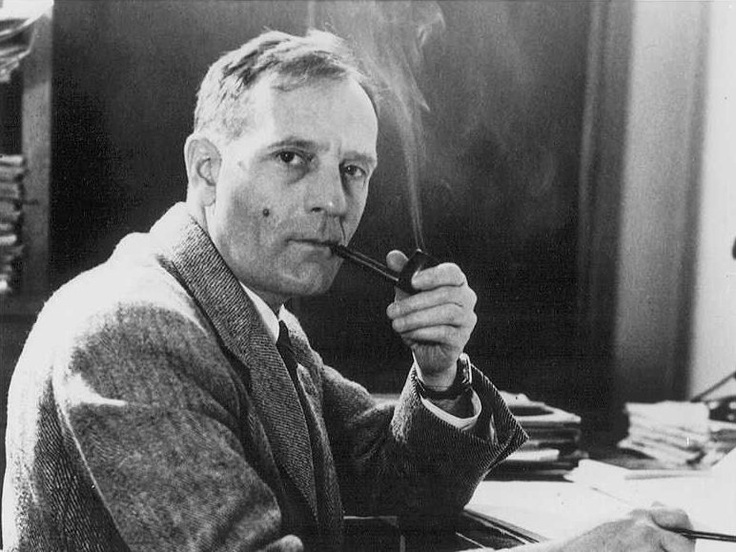
Figure 28.2 below - At the telescope: Hubble (left) and James Jeans at the 100-inch Mt Wilson telescope.
Image Credit: Mount Wilson and Palomar Observatories

Figure 28.3 below - A Cepheid in Andromeda: Light curve of the first Cepheid measured in the Andromeda ‘nebula’ (Messier 31)
Image Credit: Glass plate image – Hale Observatory, light curve – Public Domain; sourced from American Institute of Physics

29: From 1939 – Ruby Payne-Scott
Author: Lesa Moore
Ruby Payne-Scott started at Sydney University at age 16 and became their third female physics graduate. She worked at the Cancer Research Institute from 1936 to 1938 before a brief transition into teaching - the result of a shortage of jobs for female physicists.
Thankfully, AWA began hiring physicists (lots of them) and Ruby was the first female they hired in a research capacity, albeit as a librarian, in 1939. Up the rungs she went, from librarian, to work in the standards laboratory, to full-time research. In 1941, she went to work as a research scientist at the newly established CSIR Division of Radiophysics, the title disguising the fact that they were working on radar for detecting aircraft. Quoting from her biography on the CSIRO website: “In March 1944, she and Joseph Pawsey carried out an initial radio astronomy experiment from the Madsen Building in the grounds of Sydney University. This was followed in 1945 by her carrying out some of the key early solar radio astronomy observations at Dover Heights (Sydney). In the years 1945 to 1947, she discovered three of the five categories of solar bursts originating in the solar corona and made major contributions to the techniques of radio astronomy.”
One of the petty problems she had to argue against was the expectation that women should wear skirts rather than shorts (such fun when you’re climbing up ladders and aerials). More serious problems were the issues of equal pay (reduced to 75% of the male rate in 1949 for anyone new to the organisation) and the requirement for women who got married to resign.
Ruby married in 1944 but the CSIRO administration didn’t find this out until 1950. By the time the dust settled, she had lost her pension entitlements, and her provident fund didn’t include any contributions from the CSIR and CSIRO between 1946 and 1950.
ASIO took an interest in Ruby after someone accused her of being a communist, though no evidence that she was a member of the Communist Party of Australia was ever found.
She resigned abruptly from CSIRO in 1951 when she found out that she was pregnant for the second time – the first pregnancy had ended in miscarriage. She went back to teaching later in life and never resumed her research.
Figure 29.1 below - Ruby Payne-Scott
Image Credit: Peter Hall, Ruby Payne-Scott's son – Creative Commons Licence

Figure 29.2 below - Radio Antenna: This two-element Yagi array was erected on a blockhouse at Dover Heights in February 1947. Operating at 100 MHz, this was first used by Ruby Payne-Scott, Don Yablsey and John Bolton to study solar radio emission, and later by John Bolton, Gordon Stanley and Bruce Slee for an investigation into compact sources of radio emission. At the time of the photograph the antenna was being used for solar observations.
Image Credit: Image courtesy CSIRO

Figure 29.3 below - Sea Interferometer: This diagram illustrates the principle of the Sea Interferometer as used at Dover Heights.
Image Credit: Image courtesy CSIRO
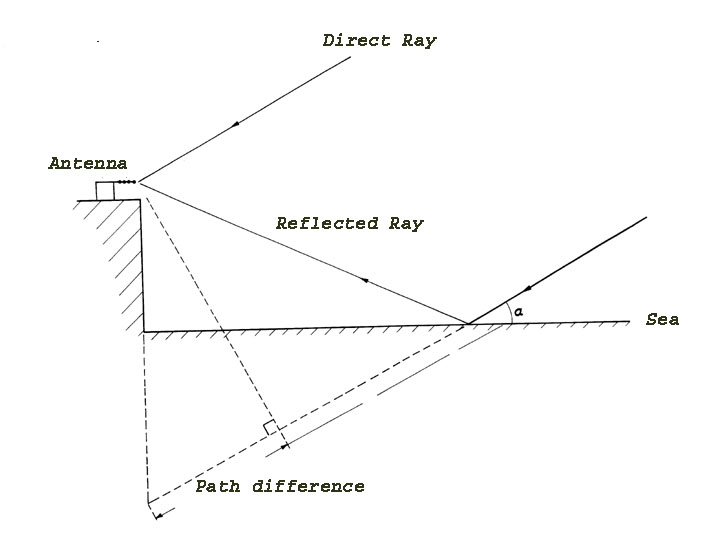
30: From 1947 – E. Margaret Burbidge
Author: Ian Kemp
Margaret Burbidge has made fundamental contributions to a wide variety of astronomical disciplines. Together with her husband Geoffrey, William Fowler and Fred Hoyle, Burbidge showed the pathways by which heavier elements (e.g., carbon, oxygen and iron) are constantly built up from lighter ones (H and He) in the nuclear reactions that occur at the centres of stars. The B2FH paper on stellar nucleosynthesis was published in 1957, with Margaret as first author.
Her later research on the rotation of galaxies produced many of the first accurate estimates of the masses of other galaxies. She’s also studied quasars, powerful radio sources that are amongst the most distant objects known, but very compact and star-like in their appearance, hence their name: quasi-stellar radio sources (abbreviates to quasar).
In 1947, Margaret received her PhD from the University of London. Hoping to take advantage of bigger telescopes and better weather in southern California, she applied for a Carnegie Fellowship at Mt. Wilson Observatory (the 100” Hooker Telescope).
The reply was curt and to the point - women were not accepted there. Eight years later, her husband Geoffrey DID get a fellowship there, as a theoretician. By then, Margaret had a fellowship at California Institute of Technology (Caltech), but was still not allowed to use the telescopes at Mt. Wilson. So, Geoffrey would apply for telescope time, and Margaret would accompany him for the actual observing sessions.
Nepotism rules twice prevented them from both being employed by the same department. In 1962, Geoffrey was hired by the Physics Department at the University of California San Diego (UCSD), and Margaret was hired the by Chemistry Department! They abolished the nepotism rules two years later and Margaret moved over to physics.
In 1972, Margaret was appointed as Director of the Royal Greenwich Observatory (in England), the first woman to be so honoured. Only there two years, she then returned to UCSD to continue her research.
In 1972, she was offered the Annie Jump Cannon Prize by American Astronomical Society, but DECLINED to accept it because the award was restricted to women, saying “It is high time that discrimination in favour of, as well as against women in professional life be removed”. That takes integrity! Twelve years later (in 1984), the Society awarded her its highest honour, regardless of gender, the Henry Norris Russell Lectureship. Among the other awards that she did accept are these:
1982: First female recipient of Catherine Wolfe Bruce Medal for distinguished service to astronomy;
1983: The National Medal of Science from President Reagan.
At UCSD she helped develop the Faint Object Spectrograph for the Hubble Space Telescope, which launched in 1990 and, with it, discovered the supermassive black hole at the heart of M82.
Margaret’s research continued into the early C21st, by which time she’d authored more than 370 research papers. She died in 2020 at the age of 100.
Figure 30.1 below - Margaret and Geoffrey Burbidge: Dr. Burbidge in 1956 with her husband, Geoffrey, who was a University of London graduate student when the two met.
Image Credit: W. W. Girdner/Caltech Archives
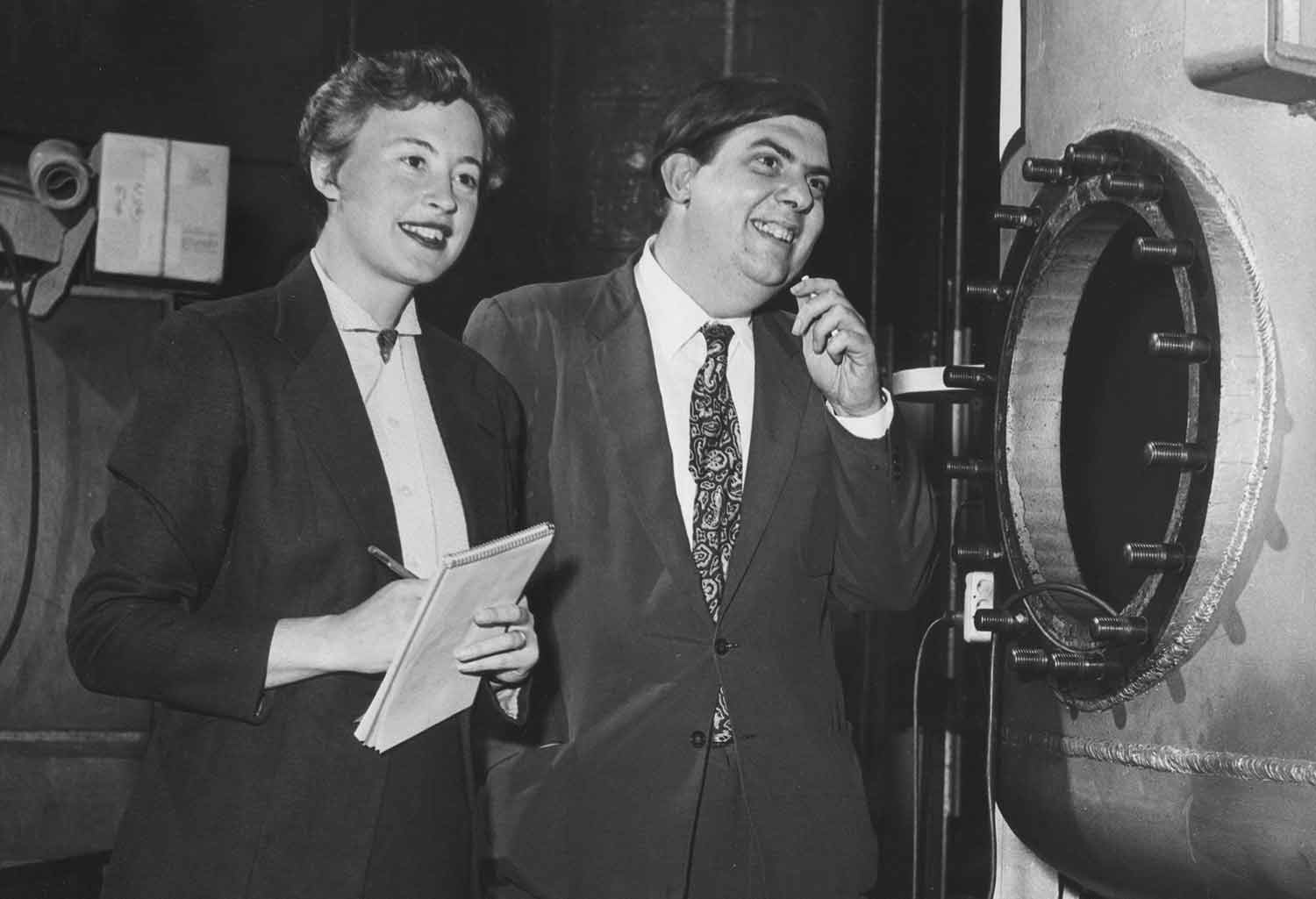
Figure 30.2 below - Building Carbon: The triple-alpha process is a set of nuclear fusion reactions by which three helium-4 nuclei (alpha particles) are transformed into carbon.
Image Credit: GNU Free Documentation License

31: From 1950s – Vera Rubin
Author: Ian Kemp
Vera Rubin was interested in rotation her whole life. Born in 1928, Vera recalled marvelling that the stars visible outside her bedroom window had rotated around the north pole star while she slept. After winning a scholarship to Vassar College, and graduating with a major in astronomy, she went to work with Martha Carpenter at Cornell. For her Masters degree (1951), she studied the proper motion of galaxies (motion relative to the generalised expansion of the universe) and showed that it was not random. This was followed up in her PhD work at Georgetown University in Washington DC, in which she was the first to show that galaxies are arranged in groups and large clusters.
Rubin later scored a permanent position at the Carnegie Institution in Washington DC, and began researching the rotation of galaxies in collaboration with Kent Ford. In, 1968 the pair made measurements of the rotation curve of the Andromeda Galaxy. The measurements were done at Kitt Peak Observatory using a spectrometer to measure redshift / blueshift in different parts of this galaxy - which looks large in the Northern sky. These data hinted at an oddity in the ‘rotation curve’ - the rotational speed didn’t drop off the way it should for a disk made of the visible stars (see Fig. 2 below), but seemed to level off into a ‘flat rotation curve’ at large radius.
This finding was confirmed by further study of Andromeda (M31) and a number of other spiral galaxies, especially using radio astronomy, which can detect the gas rotating further out than the visible disk. By 1974, it was recognised that the mass of spiral galaxies had probably been underestimated by a factor of 10, and a paper by Rubin, Ford and Thonnard (1978, ApJ 225, L107) is widely seen as the clincher for the existence of dark matter halos, which we now believe to be an integral part in the evolution of galaxies and, indeed, the large-scale structure of the Universe. ‘Dark Matter’ has been a major area of study in recent years and, although lots of things have been ruled out, we still don’t know what it is.
Rubin is also credited with the discovery of ‘counter rotation’, in which the stars in a galaxy form two separate populations rotating in opposite directions: evidence for galaxy collisions and mergers as an important part of galaxy evolution.
Figure 31.1 below - Vera Rubin at Vassar College
Image Credit: Vassar College Library

Figure 31.2 below - Rotation curve for Andromeda: Rotation curve showing Rubin & Kent’s data as black squares.
Image Credit: Bertone & Hooper 2018, Rev. Mod. Phys. 90, 45002
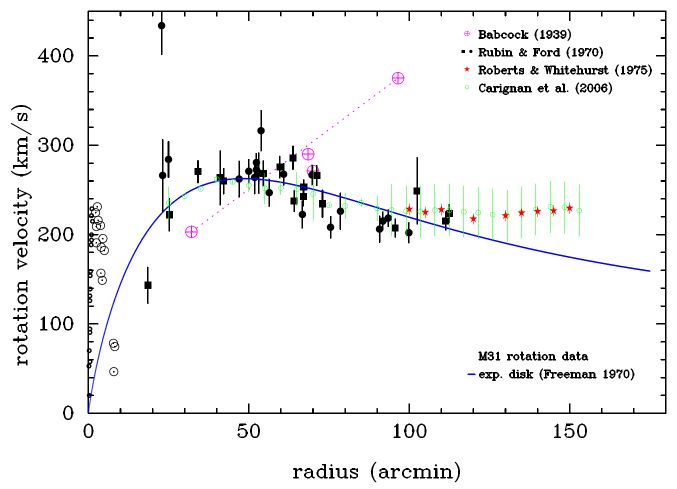
Figure 31.3 below - NGC 4550: In 1992, Rubin & Graham discovered that half the stars rotate one way, half the other way.
Image Credit: SDSS image of region near lenticular galaxy NGC 4550, also showing elliptical galaxy NGC 4551 – markup by C. Seligman.
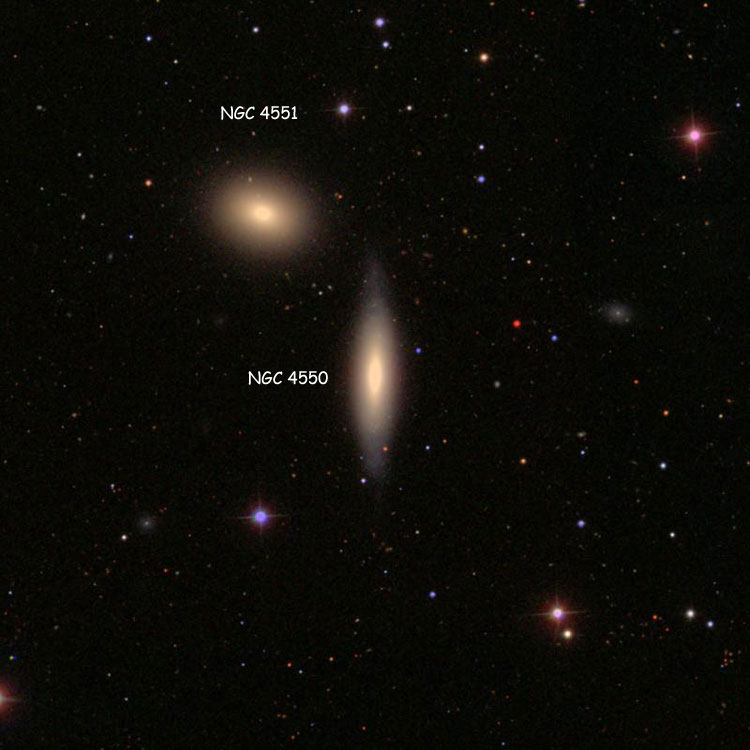
32: From 1960s – Eugene and Carolyn Shoemaker
Author: Lesa Moore
Gene Shoemaker studied the impact dynamics of Barringer Crater (also known as “Meteor Crater”). It was in 1960 that he found rare forms of silica in the crater that can only be formed by severe shock, i.e., an impact event, or a nuclear explosion. This confirmed Daniel Barringer’s hypothesis that it was in impact crater. Barringer had invested in the site in 1903, based on the discovery of about 30 tons of large oxidized iron meteorite fragments on the surrounding plains (the “Canyon Diablo” meteorites). He was hoping to mine for a massive lode of valuable iron, not realising that most of it had vapourised on impact.
Gene went on to become the lunar geology principal investigator for Apollo 11, 12 and 13. At one time, he was an astronaut candidate and would have been the first geologist on the Moon, but he was ruled out when it was found that he suffered from Addison’s Disease. In 1969, he initiated a search for asteroids that could hit the Earth. This resulted in the discovery of several classes of Earth-crossing asteroids.
Carolyn Shoemaker started her astronomical career in 1980, searching for Earth-crossing asteroids and comets at Caltech and the Palomar Observatory. In the 1980s and 1990s, Carolyn used film taken at the wide-field telescope at the Palomar Observatory, combined with a stereoscope, to find objects that moved against the background of fixed stars. The idea is that, through the stereoscope, any object appearing in different places on the two images will appear to float out of the image and be easy to detect.
As of 2002, Carolyn had discovered (or co-discovered) 32 comets and over 800 asteroids (counting the as-yet unnumbered ones). She at one time held the record for the most comets discovered by an individual.
Carolyn, Gene and David Levy co-discovered Comet Shoemaker–Levy 9. This comet was unique in that it provided the first opportunity for scientists to observe the planetary impact of a comet. Shoemaker–Levy 9 collided with Jupiter in 1994. Gene died and Carolyn was injured in a car crash in 1998 while Gene was exploring for meteorite craters in Australia. In 1999, some of his ashes were carried to the Moon by the Lunar Prospector space probe in a capsule designed by Carolyn Porco. To date (2020), Gene Shoemaker is the only person whose ashes have been deposited on another celestial body.
Figure 32.1 below - Meteor Crater: Aerial view of Barringer Meteorite Crater
Image Credit: Shane Torgerson, Creative Commons
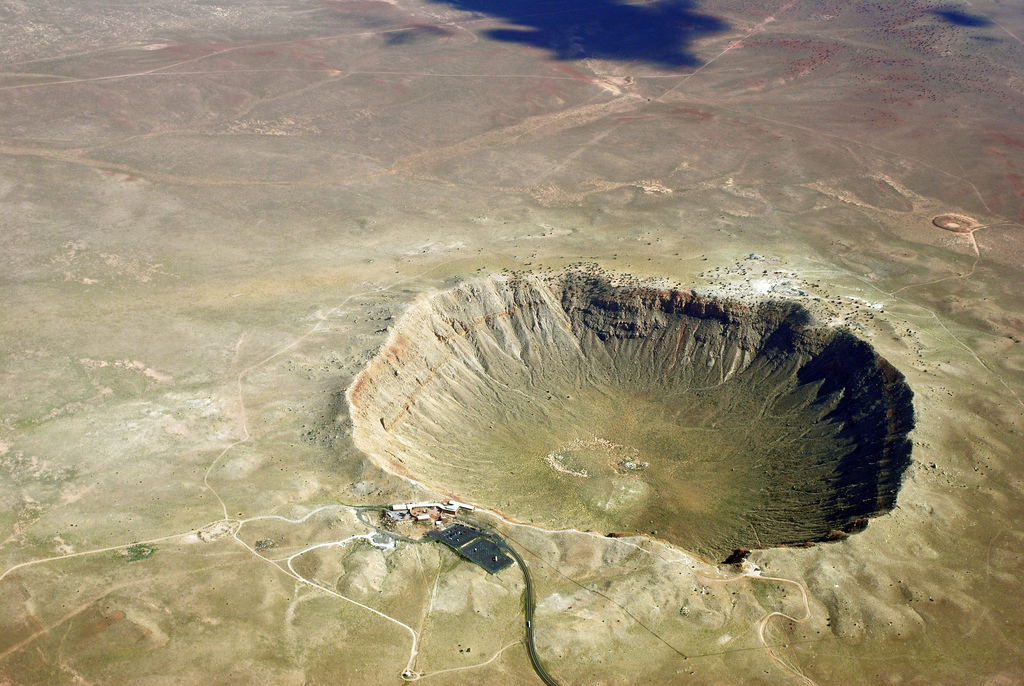
Figure 32.2 below - Impact!: One of my own sketches of the impact of Comet Shoemaker-Levy 9 on Jupiter.
Image Credit: Sketch by Lesa Moore

Figure 32.3 below - Gene Shoemaker
Image Credit: Public Domain

Figure 32.4 below - Carolyn Shoemaker
Image Credit: Public Domain
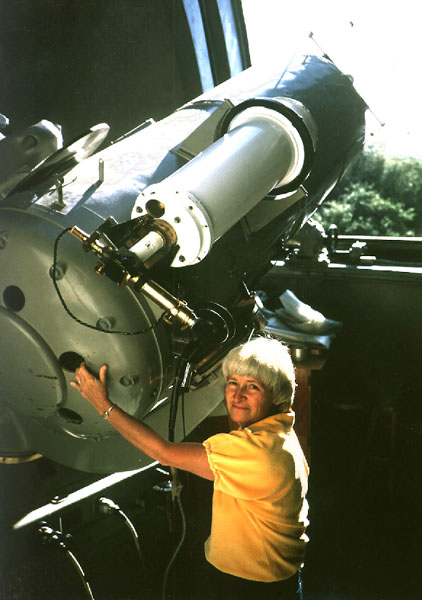
33: From 1966 – Beatrice Tinsley
Author: Lesa Moore
Beatrice Tinsley was born Beatrice Muriel Hill in Chester, England in 1941, the middle of three sisters, and emigrated to New Zealand with her family following World War II. While studying in Christchurch, she married physicist and university classmate Brian Tinsley, not knowing that this would prevent her from working at the University while he was employed there. They moved in 1963 to the United States, to Austin, Texas, but she was similarly restricted there. Her PhD was awarded by the University of Texas in Austin in 1966, with the thesis “Evolution of Galaxies and its Significance for Cosmology”. In 1974, after years of attempting to balance home, family and two commuting careers, she left her husband and two adopted children to take a position as assistant professor at Yale.
Tinsley completed pioneering theoretical studies of how populations of stars age and affect the observable qualities of galaxies – why some galaxies look blue (star-forming) and some look yellow (aged stars). Her galaxy models led to the first approximation of what protogalaxies should look like.
In 1974, three years after Margaret Burbidge turned it down, Tinsley received the American Astronomical Society’s Annie J. Cannon Award in Astronomy, awarded for “outstanding research and promise for future research by a postdoctoral woman researcher”, in recognition of her work on galaxy evolution.
She worked at Yale until her death from cancer in the Yale Infirmary in 1981. Her ashes are buried in the campus cemetery.
Her last scientific paper, submitted to the Astrophysical Journal ten days before her death, was published posthumously that November, without revision.
In December 2010, the New Zealand Geographic Board officially named a mountain after her. Mt Tinsley is in Fiordland’s Kepler Mountains (which are also named after an astronomer, Johannes Kepler).
Figure 33.1 below - Beatrice Tinsley
Image Credit: Uncredited – if you took this image or know anything about it, please advise editor (at) asnsw.com.
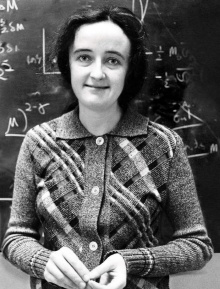
Figure 33.2 below - Hubble Deep Field: Protogalaxies and galaxies of various colours abound in the Hubble Deep Field, a picture taken over the course of ten consecutive days in December 1995, by the Hubble Space Telescope.
Image Credit: Robert Williams, NASA, ESA, STScI – Public Domain
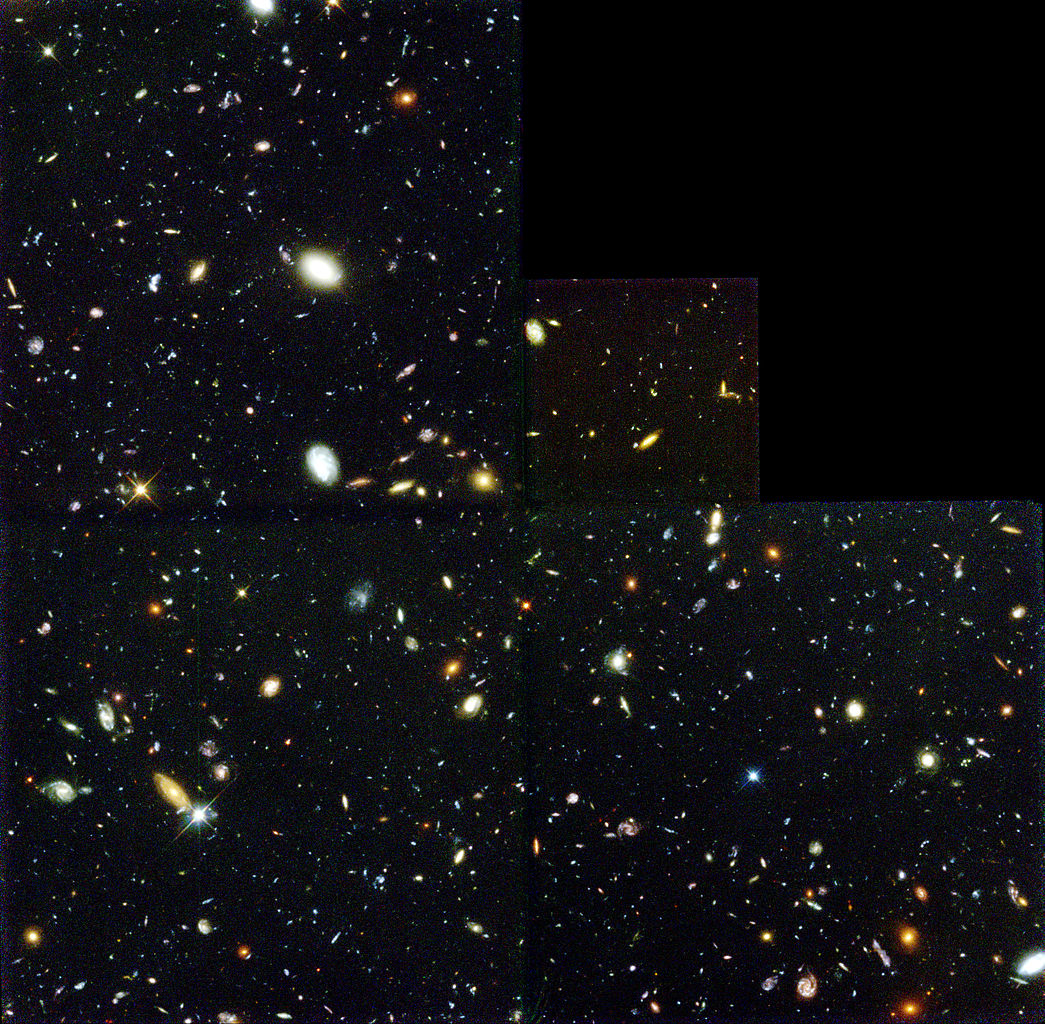
Figure 33.3 below - Mt Tinsley
Image Credit: Motorau, Creative Commons
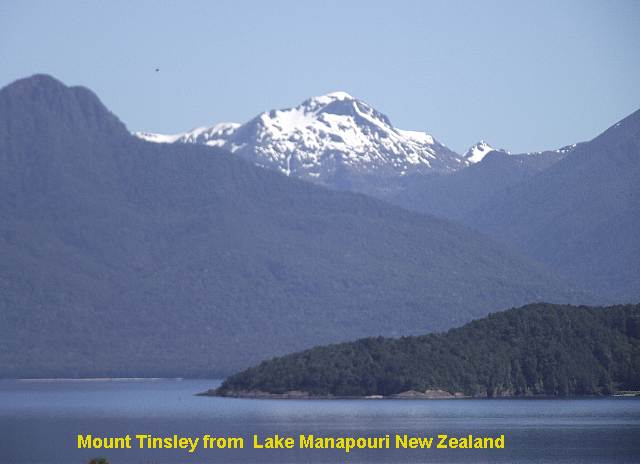
34: From 1966 – Stephen Hawking
Author: Ian Kemp
Stephen Hawking was born in 1942 in Oxford, England, and followed a fairly standard career for a research physicist: BSc (Oxford), PhD (Cambridge), then postdoc research (Cambridge). What was not standard was the field he chose to work in, which was the study of gravitational singularities (aka “black holes”) - which most people had thought you couldn’t study because they were, well, basically black holes. What was also not standard was his gradual physical decline due to motor neurone disease, which made it progressively more difficult for him to communicate and conduct his research. This disease normally kills within about 10 years, but Hawking lived with it for over 50 years, dying in 2018. Another thing that was not standard was his achievements in theoretical physics, which led to him being appointed in 1979 to the position of Lucasian Professor at Cambridge University - the job once held by Isaac Newton.
In collaboration with Roger Penrose, Hawking used Einstein’s theory of general relativity to study the physics of mini black holes - very small objects which obey the laws of quantum mechanics as well as general relativity. In 1974, he calculated that due to quantum mechanical effects at the event horizon of the black hole (the creation of ‘virtual particles’) black holes should emit radiation. This ‘Hawking radiation’ is not easily verified experimentally because, for a black hole created by a stellar collapse, it is equivalent to black body radiation from an object at a temperature in the range of nano-kelvins above absolute zero. But this does produce an apocalyptic prediction: when the universe has expanded to the point that the cosmic background radiation reaches those temperatures, stellar black holes and super-massive black holes will begin to evaporate, and all the stuff they have swallowed will come back out as very low-energy thermal radiation. For very tiny black holes, the case is different and they will emit their radiation in a big burst. These may be detectable experimentally, if they exist, by a burst of gamma rays at high redshift, and a search for this was one of the science cases for the Fermi Space Telescope launched in 2008 (hasn’t found any yet).
Hawking’s later work concerned the thermodynamics of black holes and, in particular, he was one of the physicists to look to ‘information theory’ to get more understanding about how black holes behave and thereby indirectly generate some information about early conditions in the ‘Big Bang’. Google the ‘information paradox’ if you are interested in this!
Later in life, he used his growing fame to publicise scientific ideas via some books intended for the general public, and wasn’t afraid to speak out on issues of science and society. His public profile led to his rocky family life being discussed in public, which included two divorces and allegations of physical abuse involving his second wife who had been one of his nurses.
Apart from Hawking’s contribution to the science of black holes, which is now part of mainstream astronomy, I personally most remember his answer to a question about how there could be a beginning to time. He said words to the effect “it’s just a zero point, it’s not a sudden start of everything. The North Pole is also a zero point on the surface of the Earth, but it’s just a point like any other - there isn’t a sudden big edge there. At least, that’s what I’ve been told, I haven’t been there”.
Figure 34.1 below - Stephen Hawking: Hawking as a fresher at University College, Oxford
Image Credit: University College, Oxford

Figure 34.2 below - Popular Media: Hawking appeared on ‘The Simpsons’ three times.
Image Credit: Sourced online.

Figure 34.3 below - That Book: Hawking’s book, which attempted to popularise his theoretical work, sold 25 million copies and has been described as the ‘most unread book in the world’.
Image Credit: Bantam Books
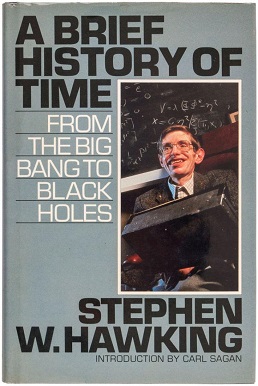
35: 1967 – Jocelyn Bell Burnell
Author: Lesa Moore
Interplanetary scintillation is the apparent fluctuation in intensity of the radio emission from a radio source. In other words, it’s just like the twinkling of stars, but caused by the solar wind. Compact sources, e.g., quasars, scintillate more than extended sources. Professor Tony Hewish realized this might work as a way of finding quasars, and designed a large radio telescope to do this.
Bell, inspired to astronomy after her father helped design the Armagh Planetarium, joined Hewish as a PhD student when construction of this telescope was about to start. It wasn’t anything like the “Dish”. The radio telescope involved 4.5 acres of land, more than a thousand posts, 2000 dipoles and 120 miles of wire and cable. According to Bell’s after-dinner speech (available here), it took two years to build and cost about £15,000.
Not only was Bell involved with construction, but she analysed all the data, which came in on a chart recorder. To save paper, the paper was run through the device slowly. This meant that a repeating signal looked like a little bit of “scruff”, all scrunched together – looking neither like a scintillating source nor man-made interference. When Bell noticed one of these odd signals, she repeated the observation with the paper running through fast. It was November 1967 when she got it on the fast recording. It was a series of pulses about 1.3 seconds apart. Hewish verified that the source was celestial, but was puzzled because this seemed too fast a pulsation rate for anything as large as a star. They started thinking, was it extra-terrestrial?
Pretty soon, Bell found another similar source, this time pulsing every 1.2 seconds. This was just before Christmas break. The findings were published in a paper to Nature at the end of January. Bell had to pose for many staged photographs for the media when the discovery hit the news.
Her after-dinner speech concludes “That was how my part in the proceedings ended. I finally finished the chart analysis, measured the angular diameters of a number of radio sources, and wrote my thesis. The pulsars went in an appendix.”
The ‘bit of scruff’ turned out to be the first experimental evidence for a type of object that had been theorised in the 1930’s. Walter Baade and Fritz Zwicky had realised that when stars between 4 and 8 times the mass of the Sun end their lives in a supernova detonation, they could leave behind a central ‘neutron star’ - made of: neutrons. After Hewish & Bell’s discovery, Thomas Gold suggested that the source could be a rotating neutron star: rotating at high speed because it’s so much smaller than the parent star; emitting a beam of radiation from the poles because of its huge magnetic field: and pulsing because of rotation of the magnetic pole bringing the beam into line with the Earth as it turns around the spin axis. This explanation for the pulsar is nicely illustrated by the ‘crab pulsar’ - a 20km ball of neutrons spinning 30 times per second at the centre of the Crab Nebula - the result of a supernova observed in AD 1054.
Bell married in 1968, taking the name Bell Burnell, and went on to do research in the fields of gamma-ray and x-ray astronomy. She has worked in many astronomical roles: tutor and lecturer at a number of universities and the Royal Observatory, Edinburgh; project manager for the James Clerk Maxwell Telescope on Mauna Kea, Hawaii; and served at times as president of the Royal Astronomical Society and president of the Institute of Physics. In February 2018, she was appointed Chancellor of the University of Dundee.
Tony Hewish shared the Nobel Prize in Physics with Martin Ryle for the discovery of the new class of object, that we now know as pulsars.
Figure 35.1 below - Jocelyn Bell: Susan Jocelyn Bell (Burnell), June 15, 1967.
Image Credit: Roger W Haworth, Wikimedia Commons
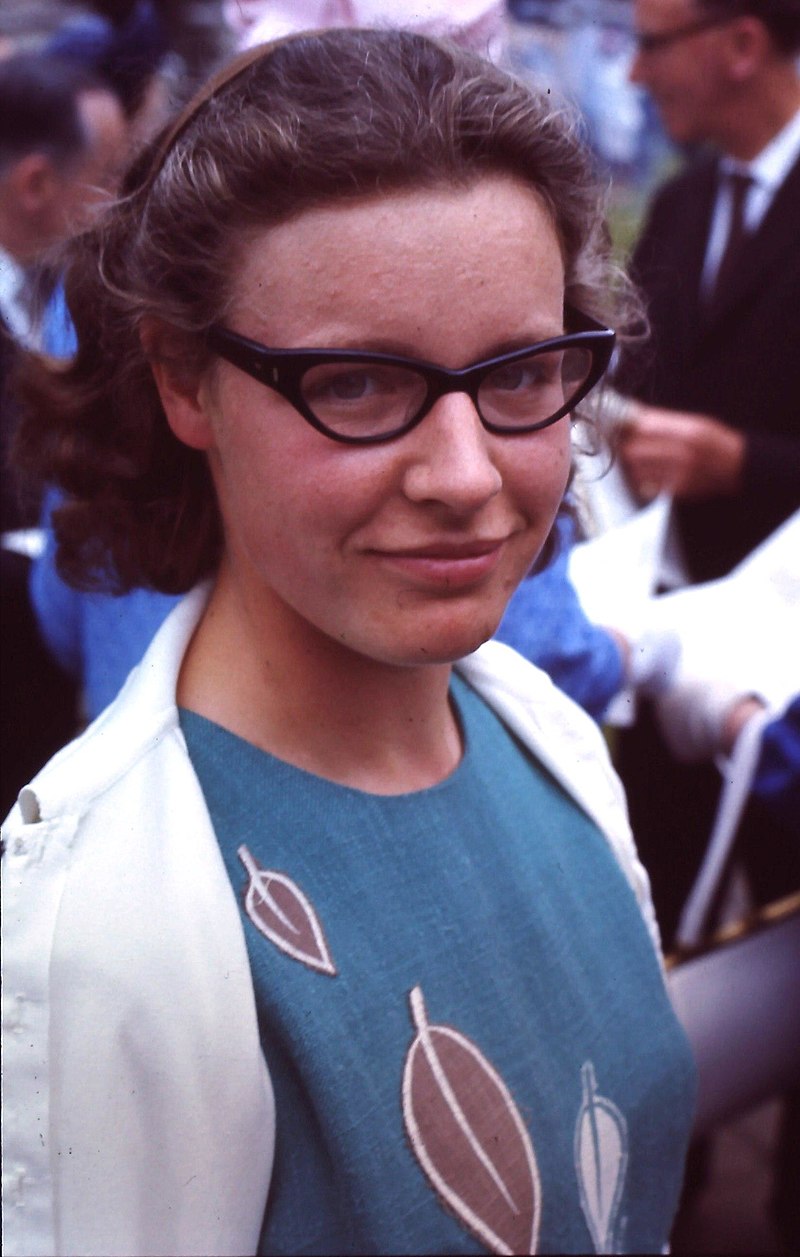
Figure 35.2 below - Fast Recording: The fast recording of the first pulsar discovered, CP1919.
Image Credit: North American AstroPhysical Observatory (NAAPO)
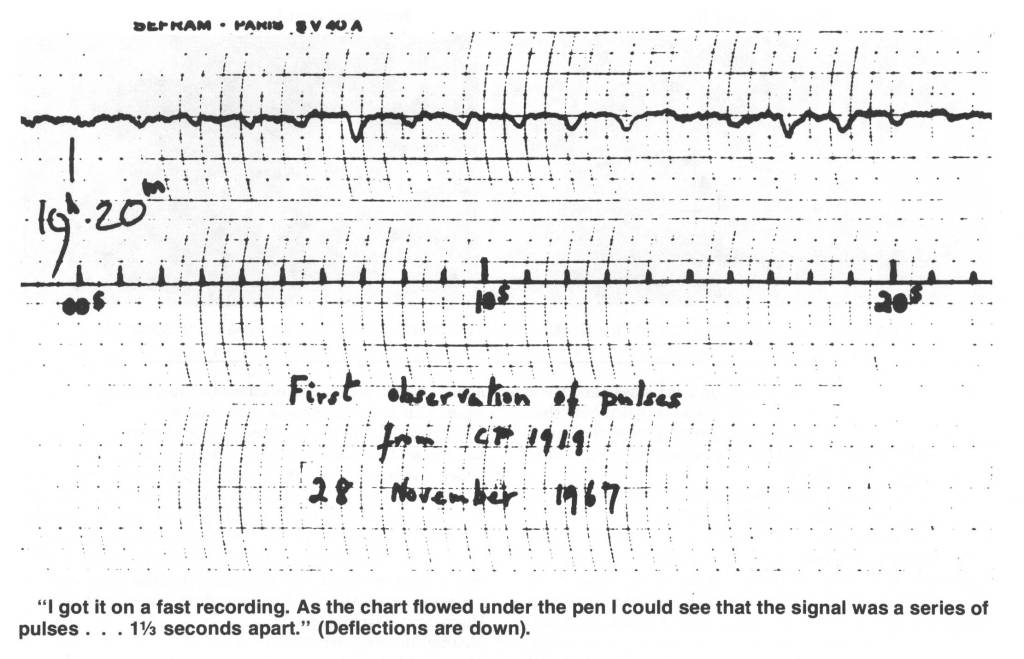
Figure 35.3 below - Diagram of a pulsar
Image Credit: NASA
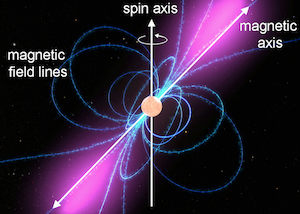
Audio Files: Recordings of the radio signals from CP1919 (Jocelyn Bell’s first pulsar) and the Vela Pulsar are available here.
36: 1968 – Ray Davis
Author: Ian Kemp
In 1968, Ray Davis (1914-2006) provided experimental proof of one of the most important concepts in astrophysics, by using one of the most bizarre observatories ever devised, to measure something invisible. His work was so momentous that he shared the 2002 Nobel Prize in Physics. But his data proved that either his experiment, or the ‘rock solid’ theory it was testing, was somehow wrong. Since the early history of philosophy, people had speculated on the source of the Sun’s energy.
In the early days, most people probably thought that it was a fire (i.e., releasing chemical energy). But in the mid-1800s, it became clear that burning could not produce enough energy for enough time.
The next step was an assumption that solar heating was due to the slow release of gravitational energy, as the Sun contracted from a diffuse ball of gas into a compact object. Lord Kelvin use this idea to calculate the absolute maximum age of the Sun as 30 million years, and used this to pour scorn on Charles Darwin, who had estimated an age of 300 million years for the Earth.
In 1920, Arthur Eddington hit on the solution we embrace today: nuclear fusion. Over the years the theory was worked out in great detail and it was shown that a number of different nuclear reactions could occur, the main ones resulting in the fusion of hydrogen into helium. This, then, was surely what was going on in the centre of Sun - but of course it’s impossible to make measurements there.
Until Ray Davis thought of a way to do it. Nuclear theory and some lab experiments had shown that the relevant nuclear reaction chain should throw out neutrinos - odd particles which have no chemical properties because they don’t feel the electromagnetic force. Davis realised that the nucleus of an atom of chlorine-37 could react by absorbing a solar neutrino and spitting out an electron - and thereby transmute into a nucleus of argon-37 (a rare and short-lived isotope of argon). So, he designed an experiment to do just that … he built a tank containing 4.5 tonnes of carbon tetrachloride (dry cleaning fluid) and put it at the bottom of a deep mineshaft in Ohio. The deep location was to make sure that the chlorine-37 couldn’t react with muon particles from the upper atmosphere: the thick layer of rock would shield them out, but not neutrinos (no chemical properties, remember).
The result? Nothing. Undeterred, Davis decided that he needed a more sensitive detector, and so built another tank 100-times the size - 454 tonnes of dry-cleaning fluid in a tank 6 metres in diameter by 14 metres long, in the Homestake Mine in South Dakota. Very careful chemical work to extract the argon-37 showed that indeed it was being created - the first experimental evidence of nuclear reactions at the centre of the Sun! The problem was, it only produced about half the amount of argon-37 that the solar models said it should.
A momentous finding, and a monumental headache. The ’solar neutrino’ problem became a hot topic in physics and was eventually solved in 1989; the solution is too complex to go into here, but the basic experimental proof of solar fusion came from Davis in 1968 and, thanks to him, scientists were spurred to learn a lot more about neutrino physics. Apart from this highlight, his early career is a bit of a mystery because, after his PhD from Yale University in 1942, he started out working for the military and, after leaving the US Army, went to work at Brookhaven National Laboratory, working on nuclear stuff.
Figure 36.1 below - The Homestake Experiment: Davis’ underground solar observatory.
Image Credit: US Dept Energy

Figure 36.2 below - Davis's Nobel Prize: Ray Davis interacts with the King of Sweden in 2002 at the Nobel Prize ceremony.
Image Credit:Nobel Institute
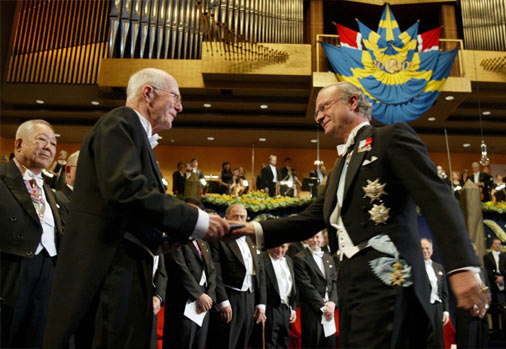
37: 1970s – Eleanor ‘Glo’ Helin
Author: Lesa Moore
Ask a primary school child about the Solar System, and they’ll know about the Sun and planets. Some will also know something about Pluto. Maybe they will have heard of comets. Asteroids? I’m not even sure if I’ve discussed asteroids with my own granddaughters, though one has a piece of the Chelyabinsk meteorite!
Eleanor Helin (pronounced Heline) studied geology and astronomy and worked initially at the California Institute of Technology (Caltech) from 1960. She was very interested in meteorites and impact craters on the Moon.
Putting the idea of impacts together with the vulnerability of the inner planets (Gene Shoemaker had confirmed that there are impact craters on the surface of the Earth), Helin turned her attention to searching for asteroids that could hit the Earth – the NEA (near-Earth asteroid) class.
In 1972, she instigated the Palomar Planet-Crossing Asteroid Survey (PCAS) at Palomar Observatory, using photography with the 18-inch (0.46-m) Schmidt telescope. Her first near-Earth asteroid was found on July 3, 1973. Helin worked with the project for almost 25 years. The objects she sought show up as little streaks on astronomical exposures (taken over periods of minutes or hours). A streak indicated that the asteroid (or comet) is moving with respect to the background stars. From 1980, Helin also worked with JPL’s International Near-Earth Asteroid Survey (INAS) and, subsequently with the Near-Earth Asteroid Tracking (NEAT) survey – an autonomous system that transmitted the data back to JPL each morning for team members to review.
Helin worked on these programs for over three decades, discovering or co-discovering some 900 asteroids and several comets.
Helin’s discoveries include the first two Aten asteroids, at least seven Apollo asteroids and seven Amor asteroids.
Aten asteroids cross Earth’s orbit but not Mars’s orbit; Amor asteroids cross the orbit of Mars but not that of Earth; Apollo asteroids cross both planets’ orbits. Helin also discovered three Trojan asteroids – asteroids that share Jupiter’s orbit around the Sun but trail Jupiter in a region about 60 degrees behind the planet. Asteroid 3267 Glo is named after her (Glo is her nickname).
Figure 37.1 below - Asteroid Discovery: Eleanor Helin holds the announcement of the discovery of asteroid 2100 Ra-Shalom 1979
Image Credit: Helin Family Estate/Palomar Observatory, fair use as no free portrait is available - educational content.
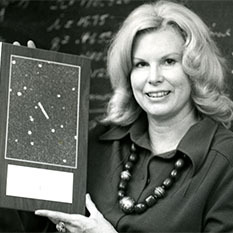
Figure 37.2 below - Near-Earth Asteroids: Diagram shows Apollo, Aten and Amor orbit criteria.
Image Credit: Wikimedia Commons
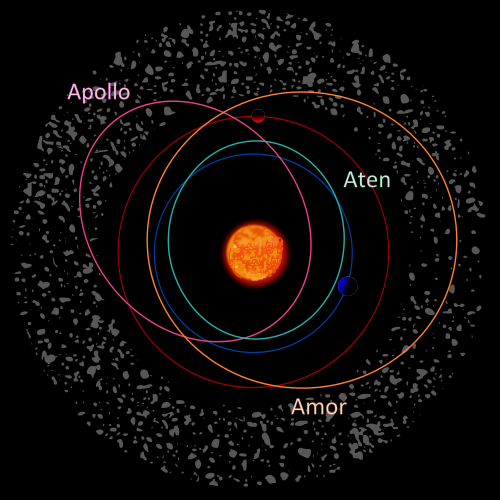
Figure 37.3 below - Trojans: Diagram shows Trojan, Greek and Hilda asteroids of Jupiter.
Image Credit: Public Domain

38: From 1981 – Rev. Robert Evans
Author: Ian Kemp
What eventually happens to a star when it runs out of fuel for nuclear fusion depends upon its mass. Some just fade away, but others undergo cataclysmic explosions, which trigger off high-energy nuclear reactions in the expanding ball of gas resulting from the detonation. These reactions are the source of most of the chemical elements in the universe so, naturally, astronomers are very keen to study supernovae and would like to observe them from the moment they first light up, until they fade away to nothing.
Which is difficult, because we have no way of predicting when and where the next supernova is going to be. The large telescopes used in most professional work image tiny areas of the sky, and ’scopes designed to scan the whole sky are usually set to carry out long-term surveys and scan methodically as they work.
What we really need is something that can look at billions of stars each night (for example by visiting a series of galaxies) and compare the view with the view from the previous night, to look for changes. Then take out the effects of asteroids, meteors, Elon Musk and other pests, to reveal a change due to an active supernova, then contact a friend to confirm the observation before setting off the alarm bells. Today, a number of groups of amateur astronomers do this using automated scopes and specialist software (if you want to join one of those groups, let me know!).
But one of the earliest and the greatest consisted of a 3-colour sensor attached to a neural network: I’m talking about the eye and the brain of the Reverend Robert Evans. Robert Evans (1937-) was a Methodist minister (now retired) who did a lot of observing under the gorgeous dark skies of Coonabarabran, and today lives in Hazelbrook, NSW. Among his other talents, the main one the astronomers care about is his eidetic memory (in the old days referred to as ‘photographic memory’) which allows him to recall a visual image as easily as you can recall the first five letters of the alphabet.
Limited by the slew rate of the telescope he was using, he was able to glance at up to 120 galaxies per hour and see instantly if they had changed in appearance from what he’d seen before. With such a talent and some motivation, it is little surprise that Evans holds the world record for visual discoveries, which numbered 42 supernovae and one comet. One special supernova was 1983N, in the galaxy M83, which Evans spotted very early in its explosive journey, enabling professional observers to come in with the very expensive big guns and measure it accurately enough to declare it a new type of supernova (type 1b). In addition to these, he was able to spot for the first time four supernovae captured in photos taken at Siding Spring observatory, by looking through the pictures.
In 1988 Robert was awarded the Medal of the Order of Australia for services to science and, in 1996, was awarded the McNiven Medal by the Astronomical Society of NSW. He has written a number of books on religious issues, and continues to do so in his retirement. Which goes to show that science and religion can exist in harmony in at least one productive mind.
Figure 38.1 below - Rev. Bob: Bob Evans (left) at a professional astronomical conference in Sydney, 2011.
Image Credit: BOSS group

Figure 38.2 below - Discovery: Discovery No. 41, in NGC 5530
Image Credit: Gerry Aarts (WSAAG), Museum of Applied Arts & Sciences, Sydney Observatory
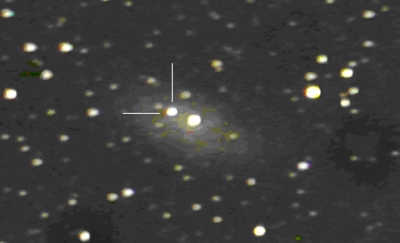
39: From 1983 – Carolyn Porco
Author: Lesa Moore
Fancy being a Solar System explorer, seeing Uranus and Neptune with the eyes of Voyager 2 and discovering mysteries of Saturn’s moons as seen by the Cassini orbiter, not to mention seeing the first close-up views of Pluto and Charon (New Horizons mission)! This is the tale of the American planetary scientist, Carolyn Porco.
It was in 1983 that she joined the Department of Planetary Sciences at the University of Arizona and was made a member of the Voyager Imaging Team, in time for the Voyager 2 encounters with Uranus (1986) and Neptune (1989). The Voyager images of Saturn and its ring system and moons had already been obtained in 1980-81, and Porco was able to analyse ring images to determine that acoustic resonance in the planet itself was responsible for certain wave features in the rings. Porco also discovered one of Neptune’s ring arcs, and has explored the physics behind the asymmetries of the rings of Saturn, Uranus and Neptune.
She leads the imaging science team on the Cassini mission to Saturn (the spacecraft has ended its mission in 2017, but the analysis of data continues). She is an expert on planetary rings and Saturn’s sixth largest moon, Enceladus.
Enceladus, with a diameter of only 500 km and a surface temperature of -198 degrees C, is geologically active! Porco’s team was responsible for the first sighting of plumes erupting from Enceladus. These icy plumes issue from around 100 geysers located along four fissures that cross the moon’s south pole. They indicate the presence of reservoirs of near-surface liquid water.
Porco's team was also responsible for the first sighting of a methane lake in the south polar region of Titan, the largest moon of Saturn.
Porco was responsible for the epitaph and proposal to honour the late Eugene Shoemaker by sending his cremains to the Moon aboard the Lunar Prospector spacecraft in 1999 and was involved with the taking of several long-distance photos of the Earth (the “Pale Blue Dot” with Carl Sagan in 1990, a dark-side of Saturn image with Earth in the background, and “The Day the Earth Smiled” image in 2013).
She is very active in public outreach, has co-authored more than 125 scientific papers and was a member of the imaging team for the New Horizons mission to Pluto and the Kuiper Belt. The probe flew by Pluto flyby in July 2015.
Porco is a Senior Research Scientist at the Space Science Institute in Boulder, Colorado, and she is an Adjunct Professor at the University of Colorado at Boulder.
Figure 39.1 below - Carolyn Porco
Image Credit: NASA
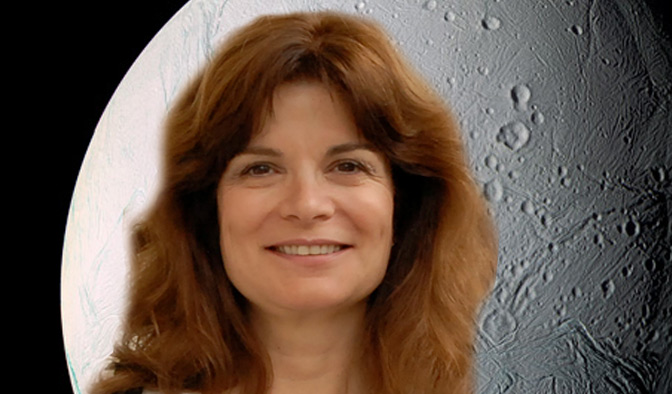
Figure 39.2 below - Geysers: Colour view of Geysers from Enceladus
Image Credit: NASA / JPL-Caltech / SSI / Kevin M. Gill
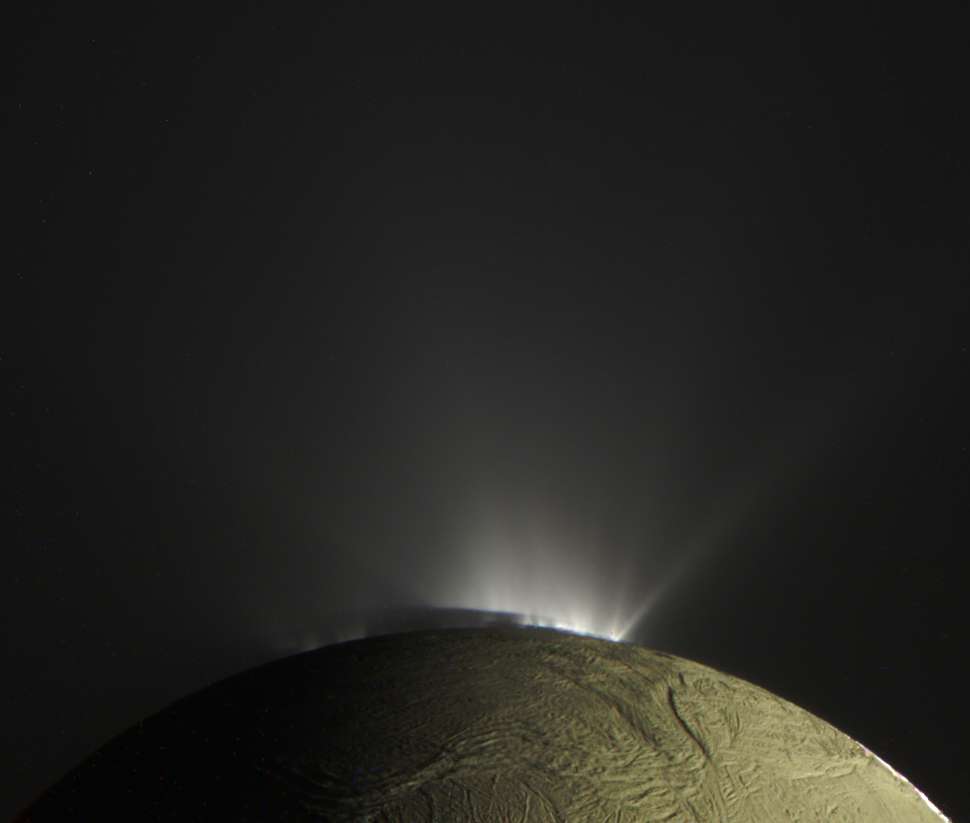
Figure 39.3 below - Earth: The Day the Earth Smiled – Saturn in the foreground and Earth arrowed.
Image Credit: NASA

Further reading: Read a transcript of an interview with Carolyn Porco here.
40: 1984 – Kip Thorne
Author: Ian Kemp
Kip Thorne (1940-) spent his early life in the rural state of Utah, where his father was a soil scientist and his mother was an economist. Luckily for us, he was encouraged into science, and did a first degree at Caltech and received a PhD in physics at Princeton. He has basically followed an academic career ever since and, today, refuses to retire and gives lectures on General Relativity, Black Holes and other subjects of great interest to astronomers.
He claims to be disappointed about receiving the 2017 Nobel Prize in physics, saying that the Nobel committee has not yet worked out that great strides in science require the collaboration of large teams. However, he was one of the prime movers in getting the LIGO gravitational wave instrument funded and built. LIGO has opened a new vista in astronomy, in allowing us to directly detect mergers of neutron stars and black holes.
Gravity propagates through space with a finite speed (the speed of light). As we all know, or should know, masses bend spacetime and light travels in ways which minimise the ‘geodesic path length’ - not necessarily the travel distance or the travel time. If a mass moves, it takes time for the distortion of spacetime to catch up, so rotating or oscillating masses can radiate ‘gravitational waves’ which are actually periodic distortions in spacetime, which can be detected if you have an interferometer capable of measuring very, very small changes in the length of a vacuum tube. Which is what LIGO is. What is most stunning about LIGO is that it found exactly the signals predicted using equations dreamt up by a bored patent clerk in the early 20th century.
Figure 40.1 below - Kip Thorne in 1972
Image Credit: Wikimedia Commons

Figure 40.2 below - What does a Black Hole look like?: Simulated image of a black hole with accretion disk for the movie “Interstellar” compared with the radio image of a black hole accretion disk (from the video: "The Warped Side of the Universe: Kip Thorne at Cardiff University"). Both images are accurate representations. The left is the view from just above the accretion disk. The right is a radio image where the black hole is viewed almost perpendicular to the accretion disk.
Image Credit: As above

41: From 1986 – Margaret Geller
Author: Lesa Moore
Getting the BIG picture is what it’s all about for Margaret Geller. Her publications in 1986/89 discuss her discovery that galaxies are not uniformly distributed in the “nearby” Universe, but clump into clusters and filaments, with great voids in between. “The Great Wall” is not in China any more … it is in Coma Berenices (and beyond)!
With the 6.5-m Multiple Mirror Telescope (MMT), she is conducting a more distant survey of the Universe called HectoMAP. She has developed techniques for detecting galaxies, including algorithms for finding galaxies in images and using the caustics technique to analyse light that has been deflected by galaxy clusters and dark matter. (Another example of caustics - the bright arcs of light appearing on the bottom of a pool, caused when sunlight shines through waves on water.)
Geller also co-discovered (2005) the first-known hypervelocity stars, flung around the Milky Way by our own galaxy’s central supermassive black hole.
She is credited with making the first animated computer graphic voyages through the nearby universe, based on actual redshift surveys.
Like so many great astronomers, Geller is interested in education and outreach, and has produced two prize-winning films: “Where the Galaxies Are” and “So Many Galaxies ... So Little Time”.
At 73 years of age (born 1947), she continues her work at Harvard’s Centre for Astrophysics (CfA) today, still working on HectoMAP, and leading a project called SHELS to map the distribution of dark matter in the Universe.
Figure 41.1 below - Margaret Geller
Image Credit: CfA, Scott Kenyon
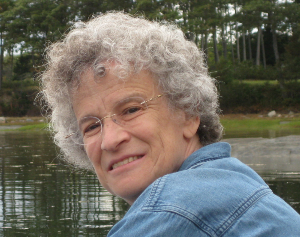
Figure 41.2 below - Galaxies!: Geller’s map of galaxies from the original CfA redshift survey out to about 230 Mpc.
(a) Map of observed velocity vs. right ascension in the declination wedge 26°.5 ≤ delta ≤ 32°.5. The 1061 objects plotted have B mag < 15.5 and V < 15,000 km/s.
(b) Same as (a) for B mag ≤ 14.5 and V ≤ 10,000 km/s. The plot contains 182 galaxies.
Image Credit: “A Slice of the Universe”, de Lapparent, Geller & Huchra 1986, ApJLett, 302, L1

Figure 41.3 below - The Largest Scale: Map of voids and superclusters within 500 million light years from Milky Way – the CfA2 Great Wall is pretty much everything on the right-hand side of this diagram, taking in the Coma, Hercules and Leo superclusters.
Image Credit: Richard Powell, Creative Commons
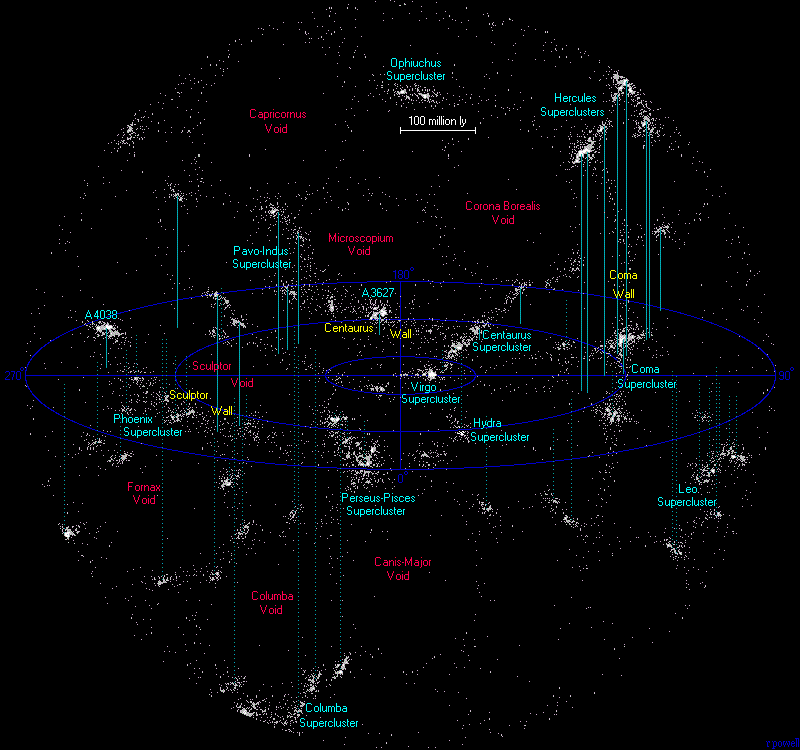
42: 1992 – Alex Wolszczan and Dale Frail
Author: Ian Kemp
Any reader of science fiction has known for decades that there are planets orbiting distant stars, usually with aliens on them, swimming in oddly coloured oceans, or flying through pink skies, etc.
But scientific evidence for ‘exoplanets’ (planets outside our Solar System)? None. Until 1992, when Alex Wolszczan and Dale Frail published the first finding - of not one, but two planets orbiting the same, er, thing. They orbited not a star, like ours, but a millisecond pulsar. This is the remnant of a star which has burned all its ‘fuel’ in nuclear fusion, and collapsed into a ball of neutrons - and has then been spun up by some long-dead companion to the point where it is rotating at hundreds of revs per second.
Alex Wolszczan was born in 1946 in Szczecinek, in northern Poland. After obtaining a Masters degree and PhD from the Nicolaus Copernicus University, he carried out postdoc work in Poland before moving to the US in 1982, where he worked at Cornell, Princeton and then Penn State University.
Using what was, at the time, the world’s largest radio telescope, at Arecibo in Puerto Rico, Wolszczan and Frail made careful measurements of the timing of the pulses coming from the neutron star PSR B1257+12, which they had discovered in 1990. Data collected over a long period indicated a slight ‘wobble’ in the position of the pulsar, indicating the presence of two planets, with 98-day and 67-day orbits. They also suggested there may be a third planet, and this was duly discovered in 1994, after analysis of three years’ worth of data. Further measurements later put the masses of the planets at 0.5, 0.4 and 0.2 Earth masses. This third planet is about the same mass as our Moon.
For some reason, a lot of people believe the first exoplanet discovered was 51 Pegasi b, which was noted in 1995, but maybe this one is more famous because it orbits a more normal star, and so fits in better with scientific theories and science fiction alike.
Figure 42.1 below - Alex Wolszczan
Image Credit: Ludek, GNU Free Documentation License

Figure 42.2 below - Postage Stamp: Wolszczan appears on a postage stamp alongside Copernicus.
Image Credit: Penn State University

Figure 42.3 below - Wobbles: Wobbles in the pulsar period - average period 6.2 milliseconds.
Image Credit: Wolszczan & Frail, 1992, Nature 355, 145
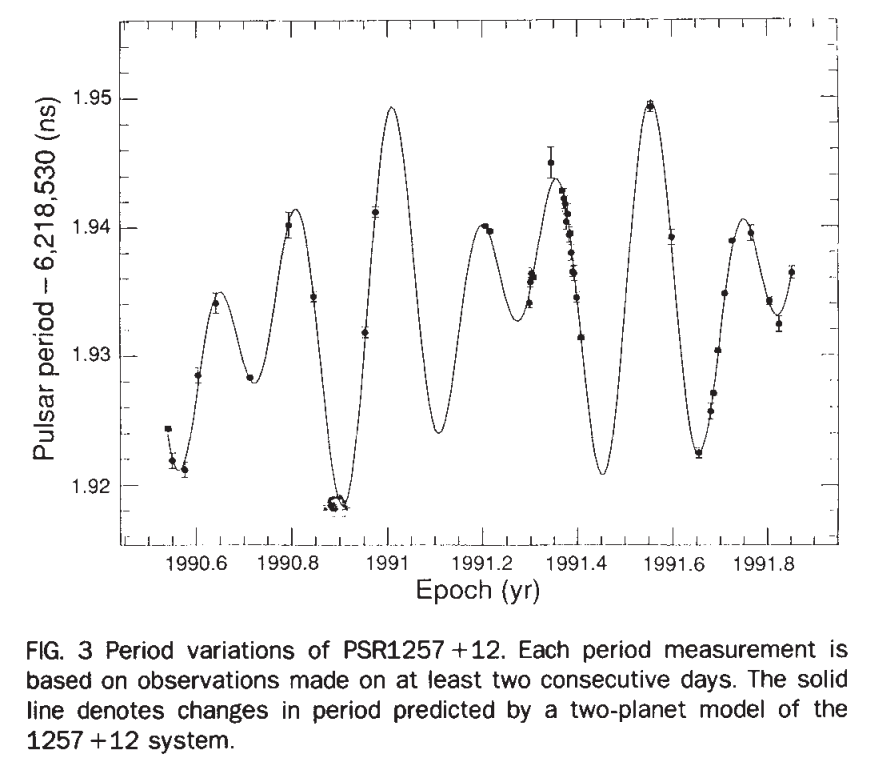
Figure 42.4 below - Three Planets: Artist’s impression of the three planets with no Sun
Image Credit: NASA - R. Hurt
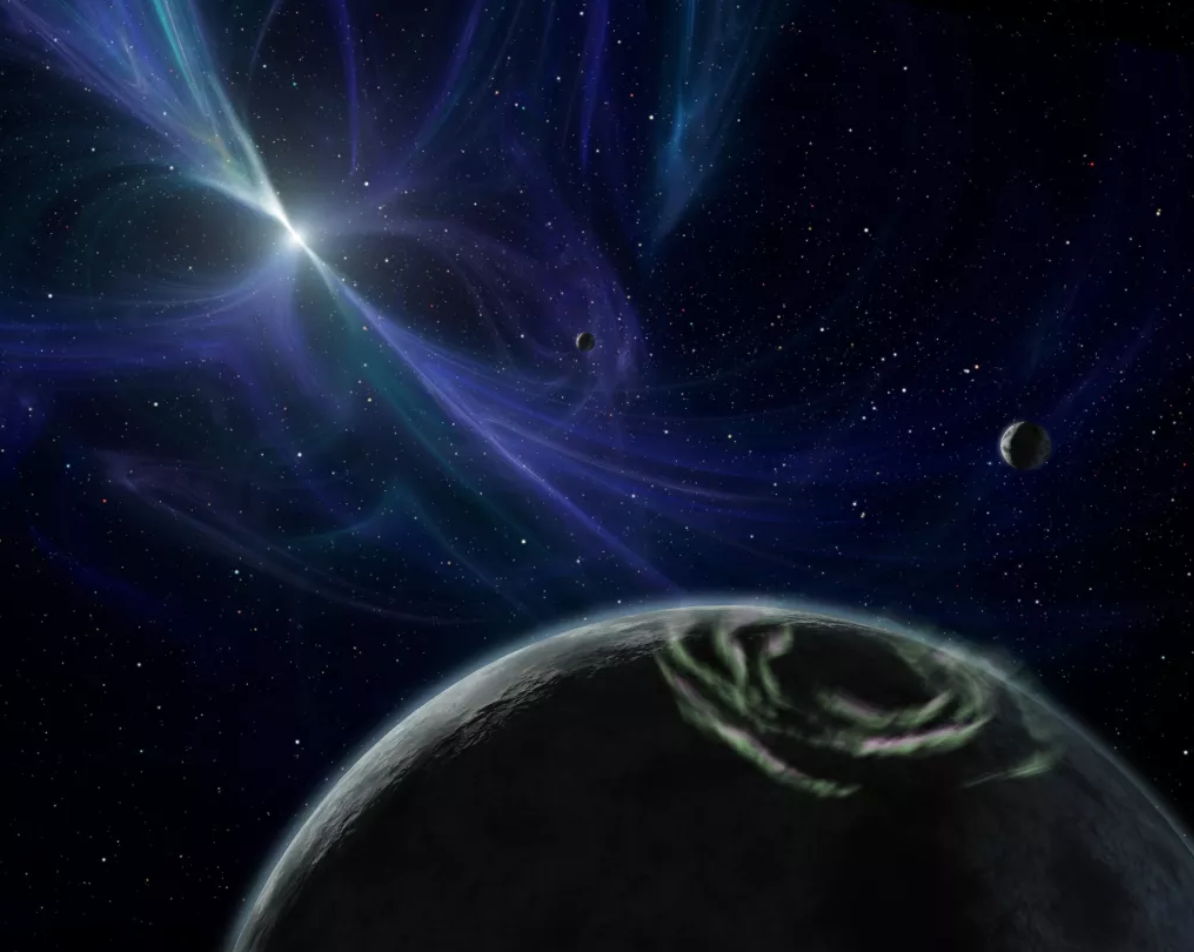
43: 1999 – Brian Schmidt
Author: Ian Kemp
Brian Schmidt was born in the US in 1967, but moved to Australia in 1994, where he worked at the Mt Stromlo Observatory (part of the Australian National University). With a degree in Physics from Arizona Uni, and PhD in Astronomy from Harvard, he set up the “High-Z Supernova Search Team” to look for supernovae at high Z values (redshift). “Type 1a” supernovae are very special things - they start out as white dwarf stars, in binary systems in which the companion spills material onto the white dwarf. The white dwarf mass increases, until it reaches 1.4 times the mass of the Sun - at which point the forces from its self-gravity are enough to start a runaway fusion reaction - the star explodes and the remnants glow brightly for up to a couple of months. Now, because all type-1a’s have the same mass, they have the same brightness. So, if you measure one in the sky, it is quite easy to calculate its distance. For stars a very long way away, spectral measurement of the redshift (Z) provides another measure of distance - from the Hubble-Lemaitre law. The point of the research of Schmidt’s group was to basically calibrate the Hubble-Lemaitre law: is the expansion of the universe actually constant?
This is an astronomy post and not a mystery novel, so we’ll give you the answer - four years of work by a group of 20 astronomers showed that the expansion rate of the universe is actually increasing - the expansion rate at high redshift (further back in time) is less. For this finding, Schmidt, along with his collaborator Adam Riess, and Saul Perlmutter (head of the US-based “Supernova Cosmology Project”) were jointly awarded the 2011 Nobel Prize in Physics. Their work forced onto astronomers the unpalatable conclusion that there is some physical entity causing the universe to inflate at ever-increasing speed. This is now termed ‘dark energy’ – and, if you have any idea what it is, please contact me with your answer before telling anyone else. The finding also gives us a clue as to the ultimate fate of the universe - perpetual expansion, until there comes a time when galaxies are flying apart so fast the night sky will become black, and the Milky Way (or its wreckage) is the only thing we can see. Ultimately, nearby stars will fade away into the infra-red, and black holes will evaporate due to Hawking radiation. But don’t worry, that’s quite some time away yet.
Brian is currently the Vice Chancellor of the ANU, and has his retirement plans sorted - along with his wife (PhD qualified in economics), he operates a vineyard near Canberra. He allegedly gave a bottle of his own wine to the King of Sweden when they met at the Nobel Prizegiving ceremony.
Figure 43.1 below - Nobel Prize: Perlmutter, Riess and Schmidt at the Nobel Prize ceremony.
Image Credit: Wikimedia Commons

Figure 43.2 below - Type 1a supernova: Diagrams of formation process.
Image Credit: Chandra X-Ray Observatory website - Illustration: NASA/CXC/M. Weiss


